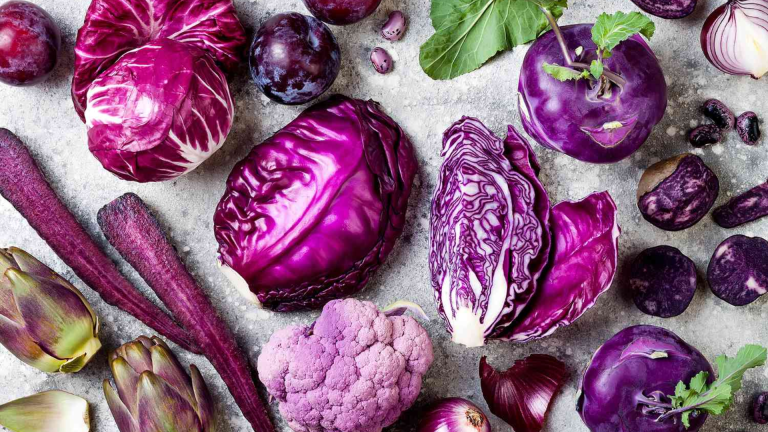I’ve always loved adding color to my meals, and purple root vegetables instantly caught my eye. They don’t just look beautiful – they’re packed with nutrients and offer a fun twist on everyday ingredients.
I got curious about what gives them their deep color, how they taste, and the best ways to cook and grow them. So I did some research and tried a few myself.
Along the way, I discovered just how many purple root vegetables exist- some I’d seen before, and others were completely new to me.
In this blog, I’ll walk you through what I found, including some purple root veggies worth knowing.
I’ll also share cooking tips, health facts, and a few personal favorites that earned a spot in my kitchen.
What Makes a Vegetable Purple?
The rich purple color in many root vegetables comes from a natural compound called anthocyanin. This pigment is part of the flavonoid family and is also found in berries, red cabbage, and purple grapes.
Anthocyanins don’t just add color, they offer health benefits too. They act as antioxidants, helping protect cells from damage, and they also have anti-inflammatory properties.
Some studies suggest that anthocyanins may support heart health, help lower blood pressure, and even reduce the risk of certain cancers.
In root vegetables, these pigments are most concentrated in the skin but are also present in the flesh of varieties like purple sweet potatoes and carrots.
The deeper the color, the more anthocyanins are likely present.
So when adding purple root vegetables to your meals, you’re not only getting vibrant color but also a solid dose of nutritional support.
Health Benefits of Purple Roots
Purple root vegetables are full of nutrients that help support the body, from digestion to heart health, all while adding bold color to your plate.
- Rich in Anthocyanins: Powerful antioxidants that protect cells and fight inflammation.
- High in Fiber: Helps with digestion and supports a healthy gut.
- Source of Vitamin A: Supports eye health and boosts the immune system.
- Contains Vitamin C: Aids in skin repair and strengthens immunity.
- Good Source of Potassium: Helps regulate blood pressure and supports heart function.
- Anti-Inflammatory Effects: May help reduce the risk of chronic conditions like arthritis.
- Supports Brain Health: Antioxidants in purple foods may improve memory and focus.
- Lowers Risk of Heart Disease: Regular intake may help manage cholesterol and improve circulation.
Purple Root Vegetables List
Purple root vegetables come in a wide range of flavors and textures, offering colorful, nutrient-rich options for cooking and gardening.
1. Purple Majesty Potato
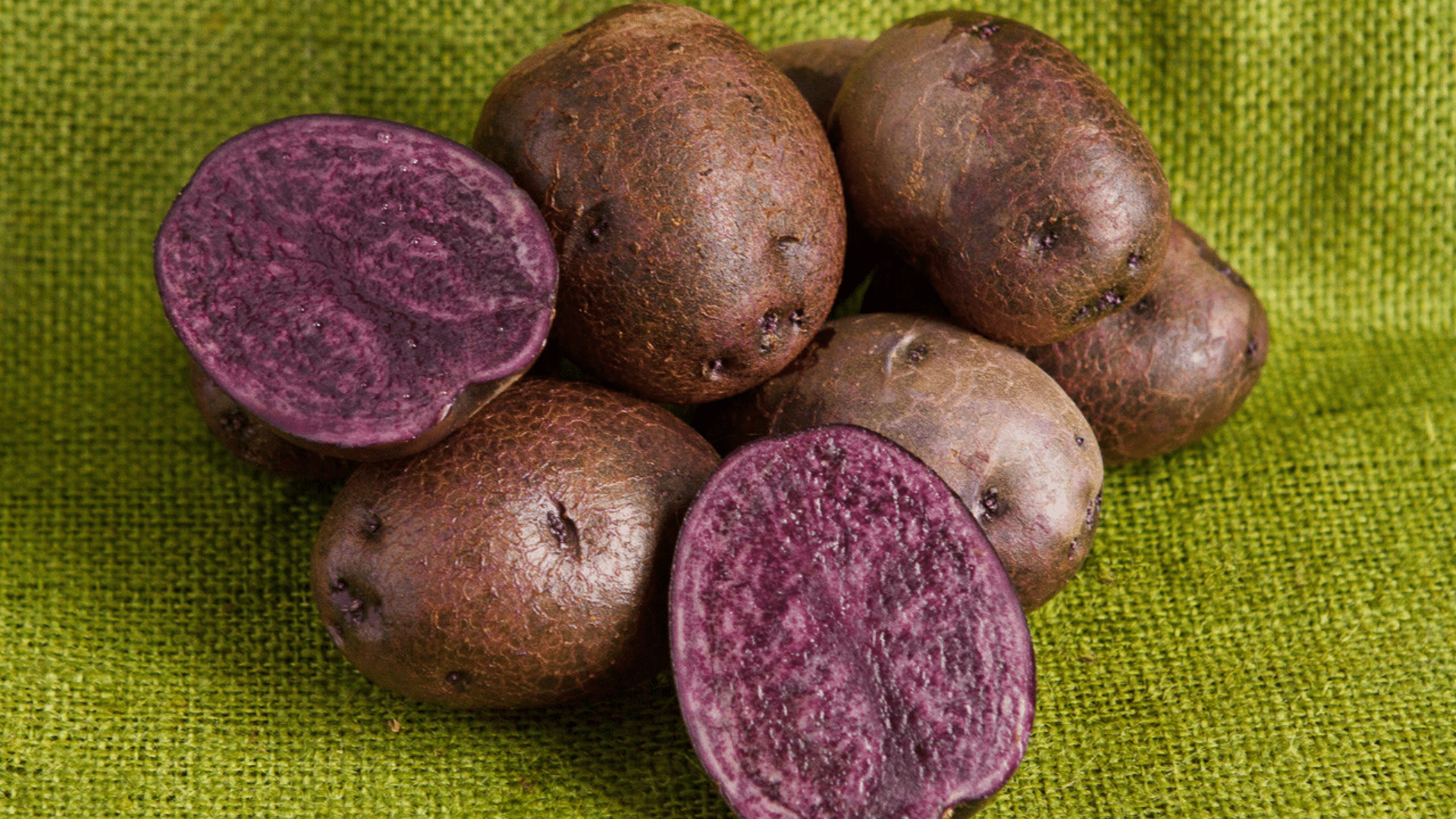
The Purple Majesty potato has dark purple skin and rich violet flesh. It’s packed with antioxidants, especially anthocyanins, and keeps its color even when cooked.
With a slightly nutty flavor, it works well in mashed potatoes, roasted sides, or colorful salads. This potato is not only eye-catching but also supports heart health and digestion.
It’s a great alternative to standard white or yellow varieties.
2. Stokes Purple Sweet Potato
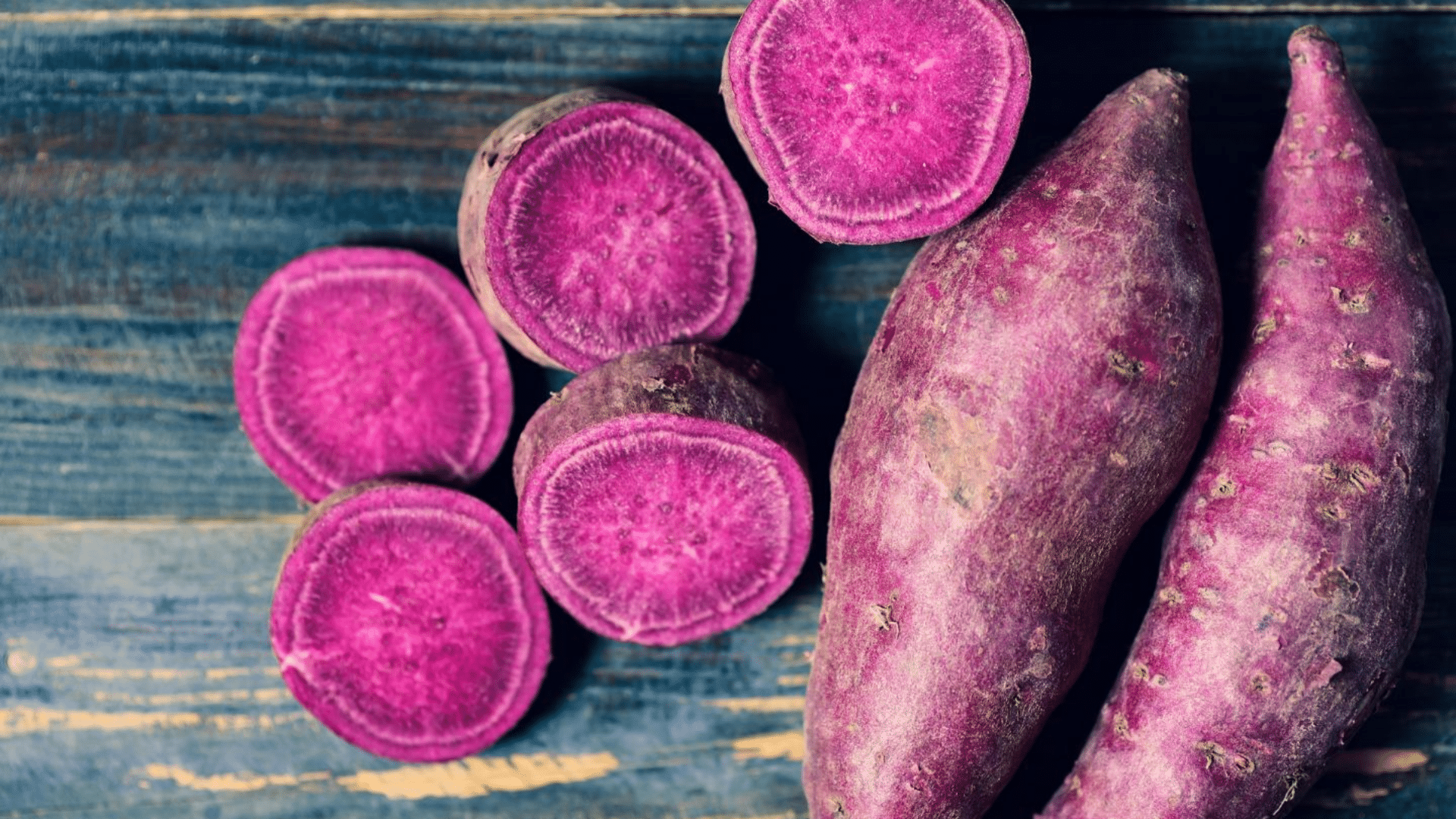
Stokes Purple sweet potatoes are vibrant inside and out, with dense, purple flesh that’s slightly dry and mildly sweet. Originally grown in California, they’re loaded with fiber and antioxidants.
They take longer to cook than orange varieties but have a deeper flavor. Roast or bake them to bring out their best texture. These sweet potatoes are a favorite for pies, fries, and hearty meal prep dishes.
3. Okinawa Sweet Potato
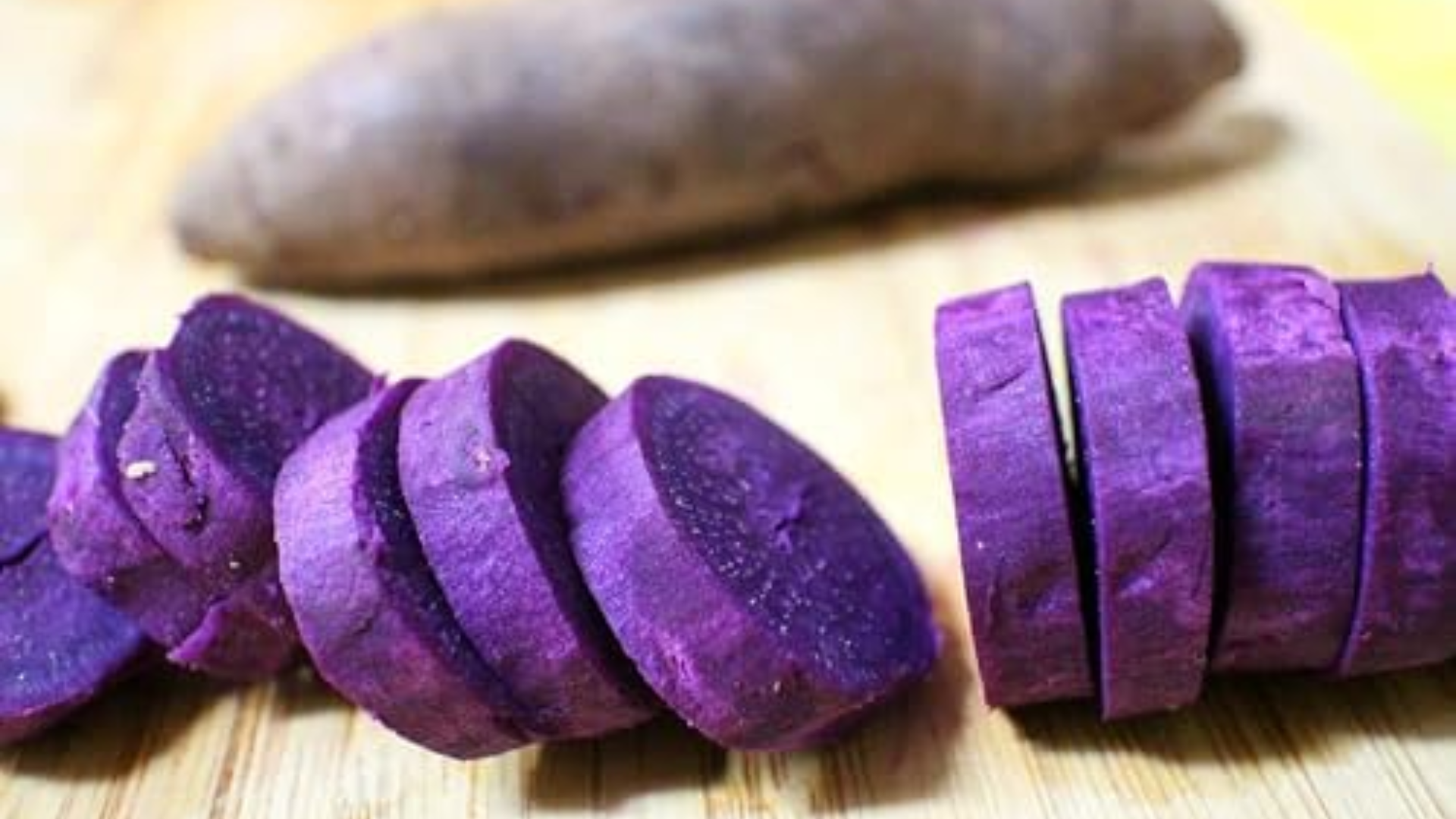
The Okinawa sweet potato has light tan skin and bold purple flesh. Native to Japan and often used in Hawaiian cooking, it has a sweet, rich flavor that intensifies when roasted or steamed.
It’s a staple in many traditional Asian recipes and is known for its high antioxidant levels. Use it in desserts, baked dishes, or as a colorful base for mashed sweet potatoes or soups.
4. Ube
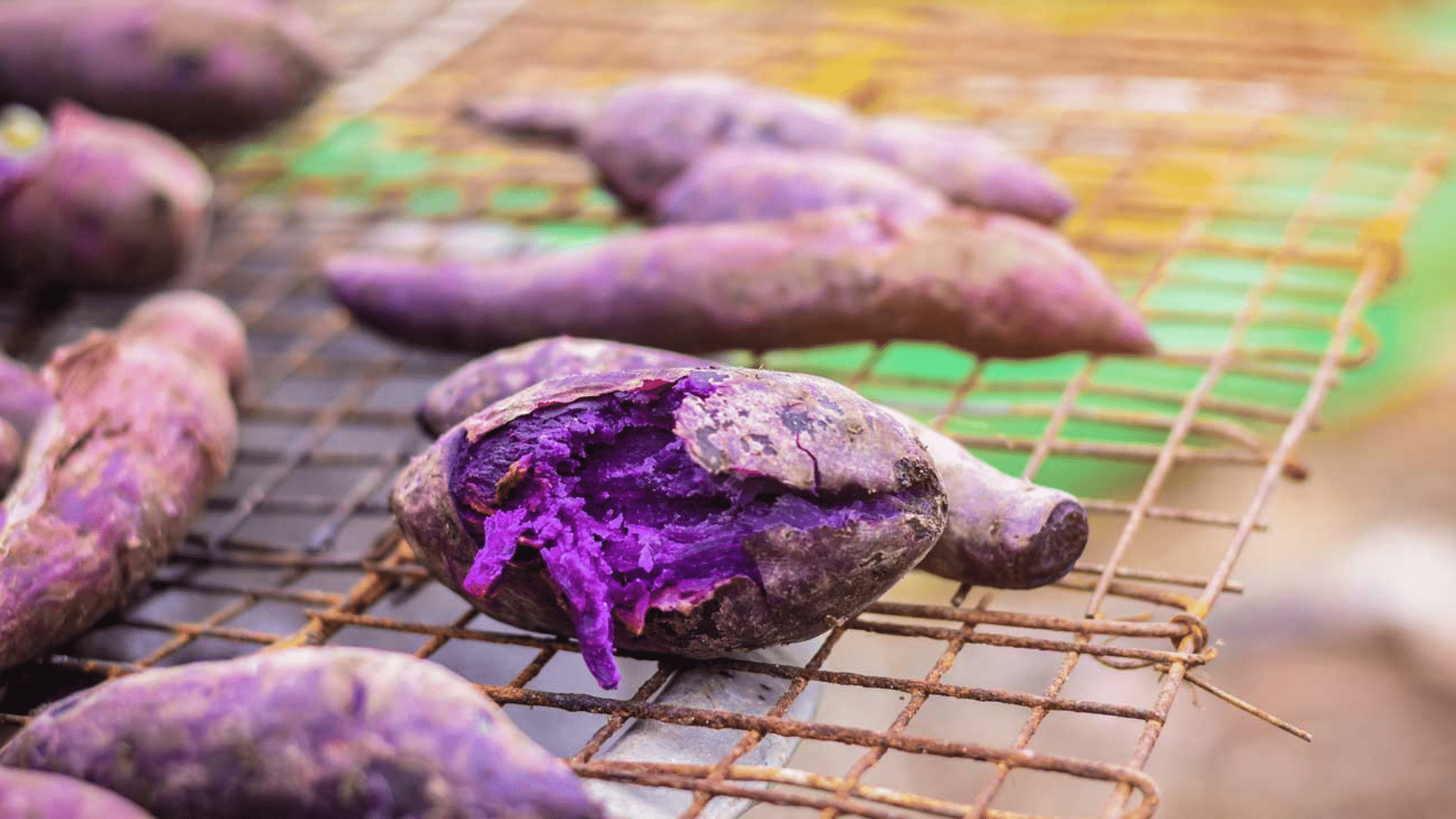
Ube is a Filipino purple yam known for its bold color and sweet, vanilla-like flavor. Often used in desserts like ice cream and cakes, it’s slightly drier than sweet potatoes but full of fiber and antioxidants.
Ube’s deep purple hue comes from high levels of anthocyanins. It’s ideal for both sweet and savory dishes, especially when boiled, mashed, or used as a baking ingredient.
5. Purple Carrot
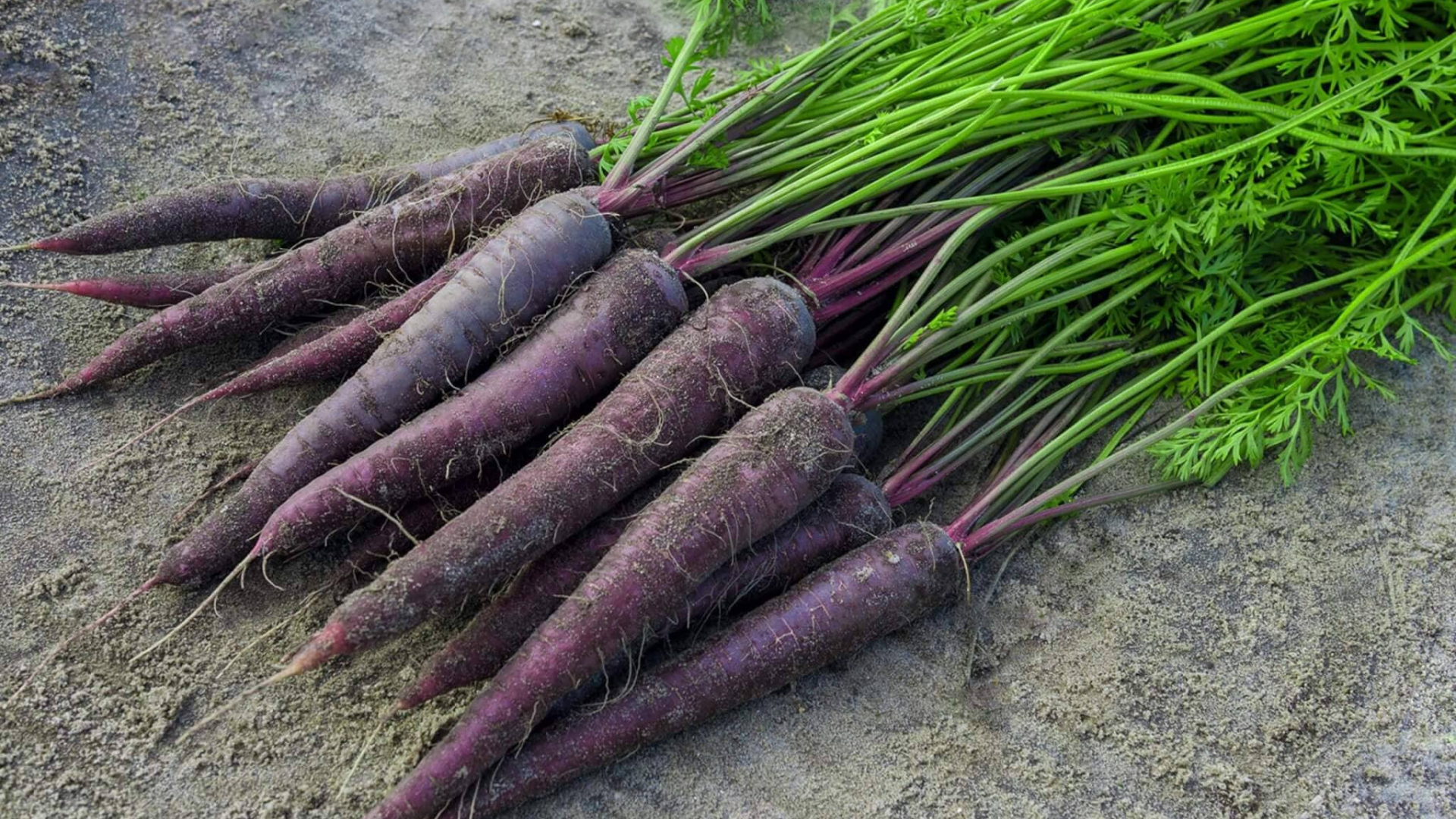
Purple carrots have deep violet skin and may have orange, yellow, or white centers. They’re one of the oldest carrot types, rich in anthocyanins and beta-carotene. The taste is earthy with a hint of spice.
They can be eaten raw, roasted, or juiced. Their vibrant color stays when cooked lightly, making them perfect for colorful salads, side dishes, or even natural food coloring.
6. Purple Beet (Beetroot)
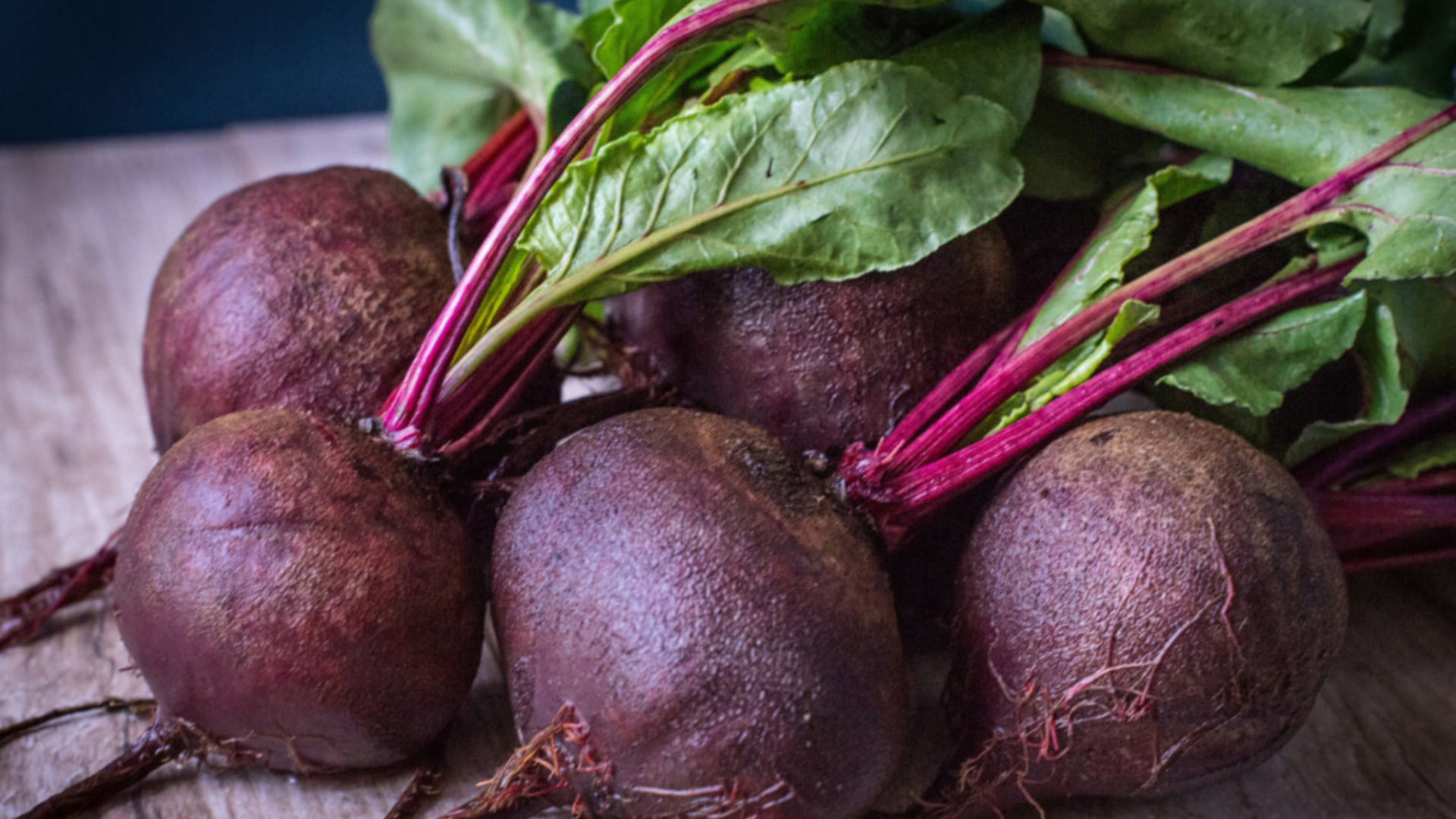
Purple beets are known for their rich color and earthy flavor. Packed with folate, fiber, and antioxidants, they’re great for heart health and digestion. Beets can be roasted, boiled, pickled, or grated raw into salads.
The natural sugars in beets caramelize during roasting, bringing out a deep sweetness. They also make vibrant additions to smoothies, soups like borscht, and even healthy desserts.
7. Purple Turnip
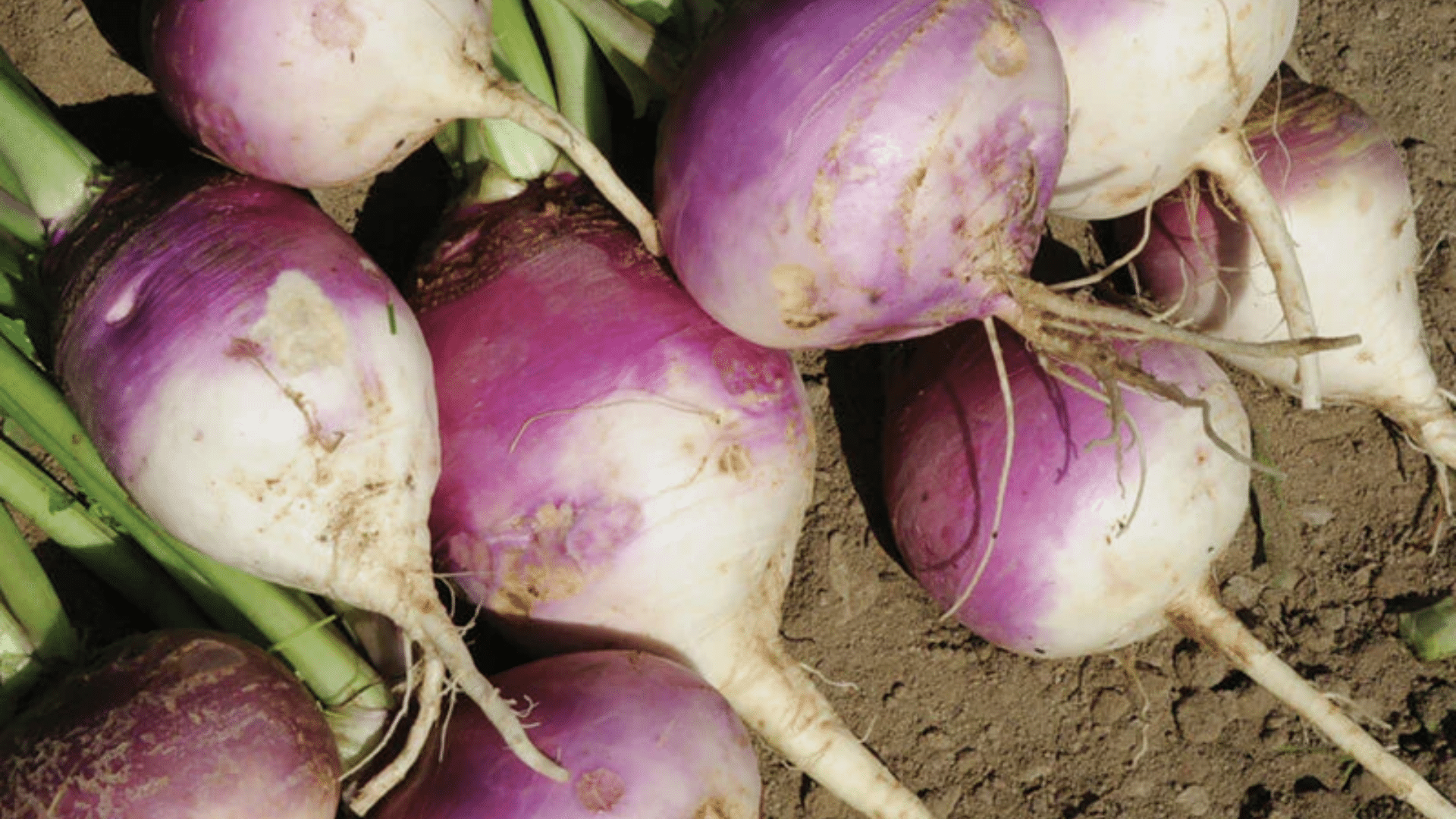
Purple turnips have white flesh with purple-tinted skin and offer a slightly peppery, mildly sweet taste. These root vegetables are rich in fiber and vitamin C.
Best enjoyed roasted, mashed, or added to soups and stews, they soften well during cooking. They can also be eaten raw when young and tender.
Their bright skin adds color, and their neutral flavor pairs well with other veggies.
8. Purple Radish
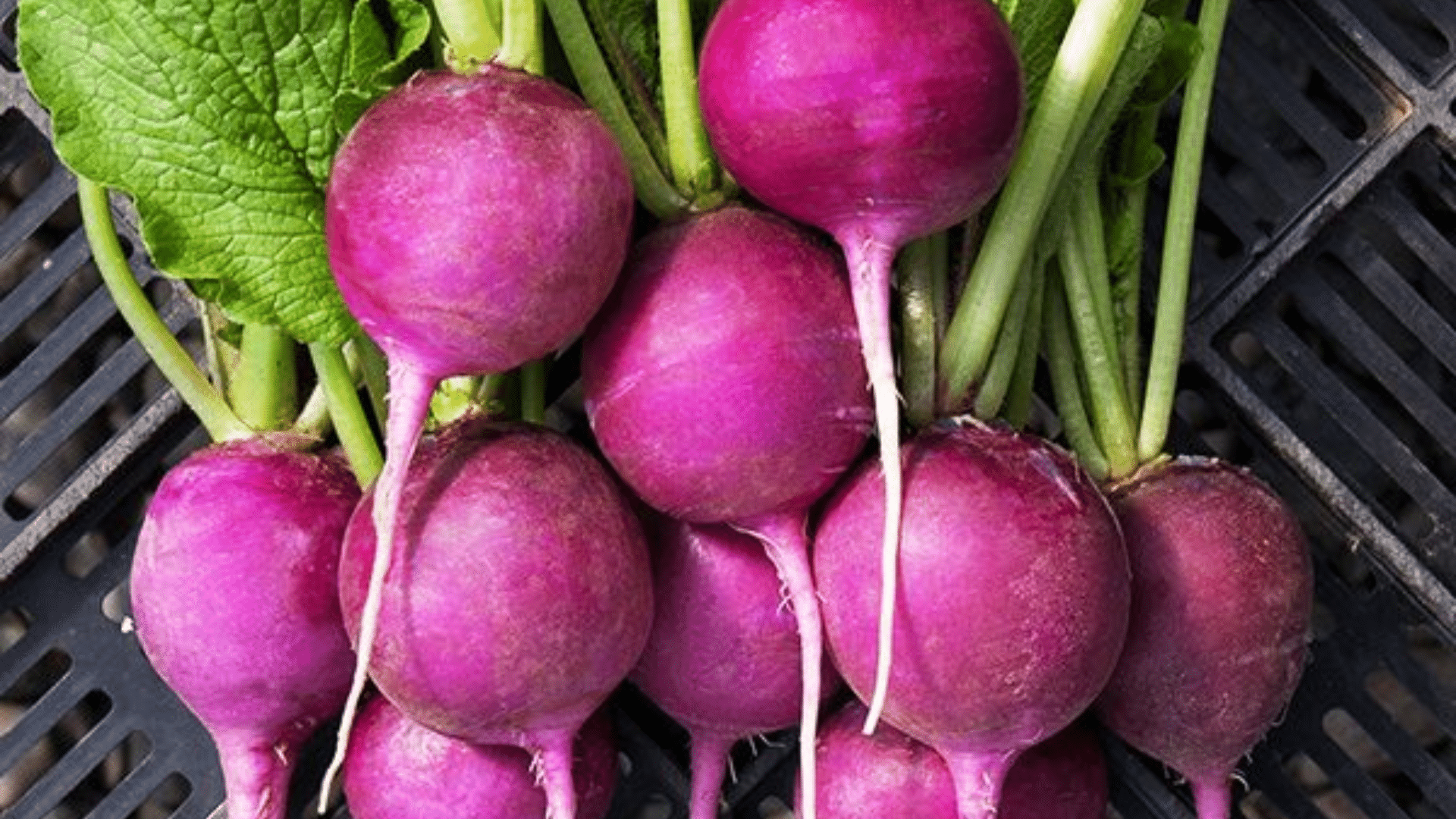
Purple radishes have crisp white or violet flesh and peppery skin. They’re smaller than daikon but deliver a punch of flavor. Excellent for slicing into salads, pickling, or roasting, they retain their crunch when raw.
Radishes are low in calories and high in vitamin C. Their beautiful color and spicy bite make them a standout in crudité platters and quick veggie sides.
9. Black Radish
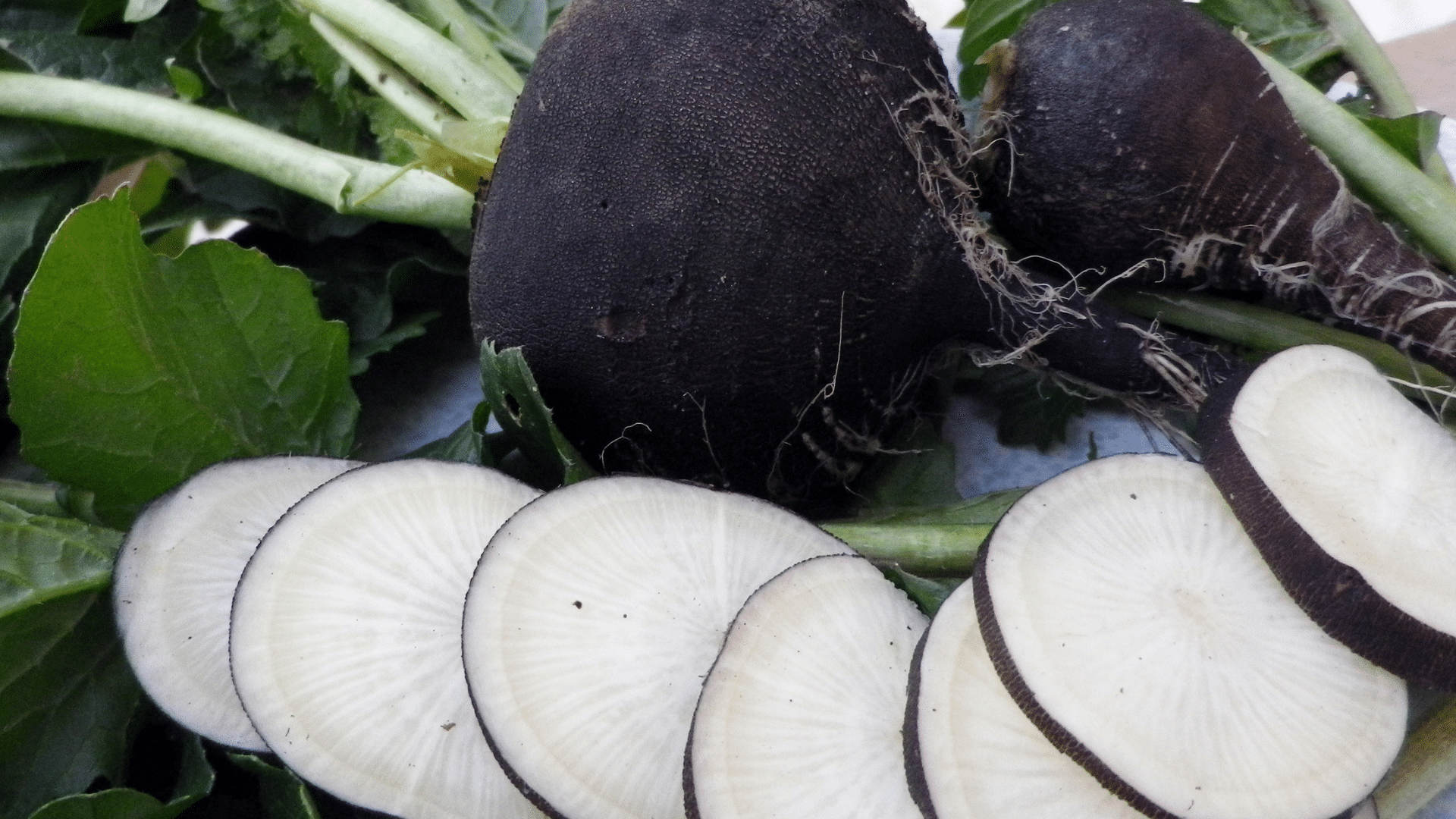
Black radishes have dark, rough skin with white flesh inside. Despite the name, they often appear dark purple or nearly black.
They have a sharp, spicy taste, stronger than most radishes, and are typically eaten raw in thin slices or grated.
They can also be roasted for a milder flavor. Black radishes are high in antioxidants and are known for supporting liver health and digestion.
10. Purple Kohlrabi
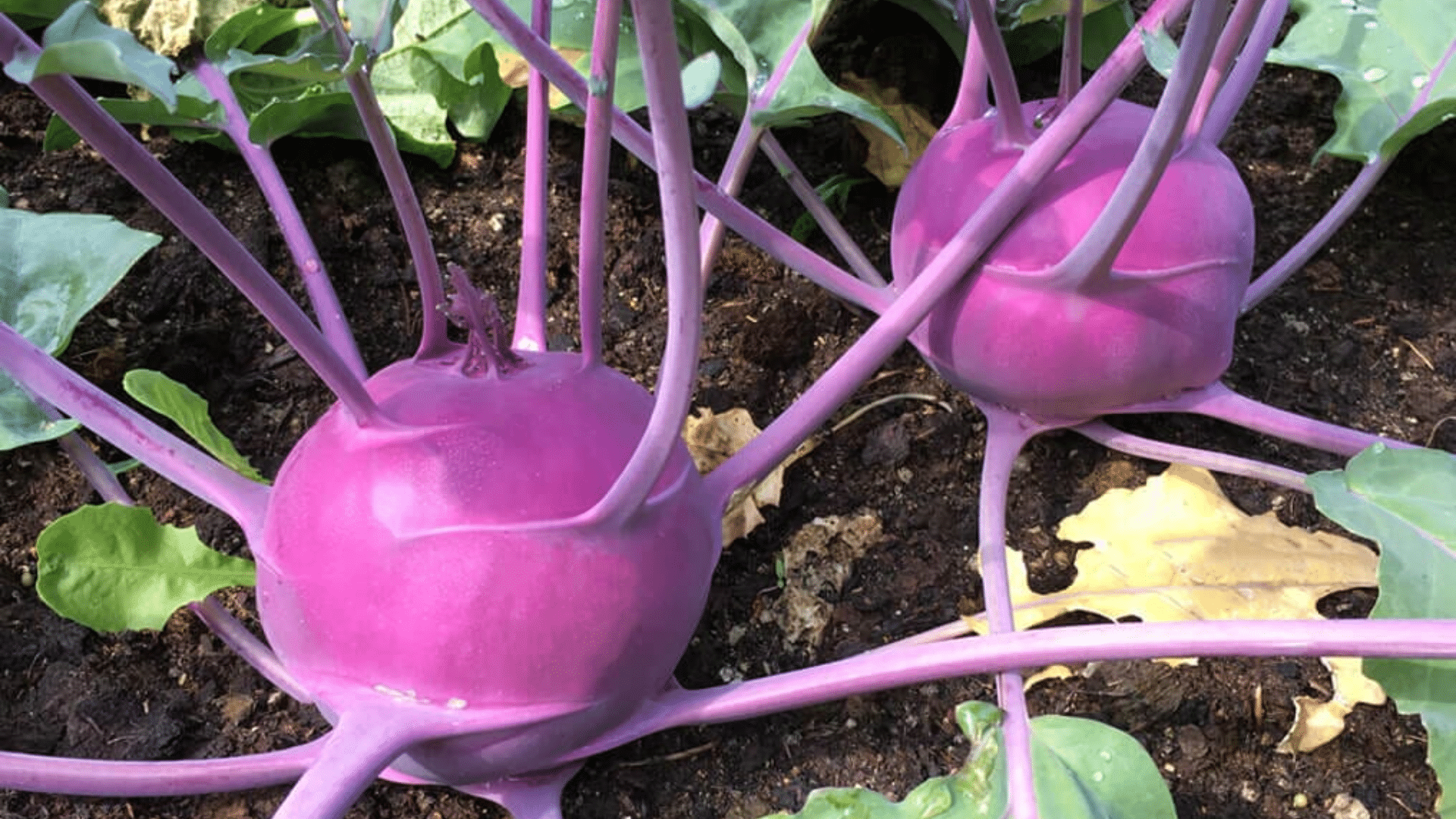
Purple kohlrabi looks like a space-age vegetable with a purple bulb and leafy stems. The flesh is pale and crisp, with a sweet, cabbage-like flavor. It’s best eaten raw in slaws or roasted until tender.
It’s rich in vitamin C and fiber. Though often mistaken for a root, kohlrabi grows above ground but is included here for its root-like bulb and culinary use.
11. Purple Rutabaga
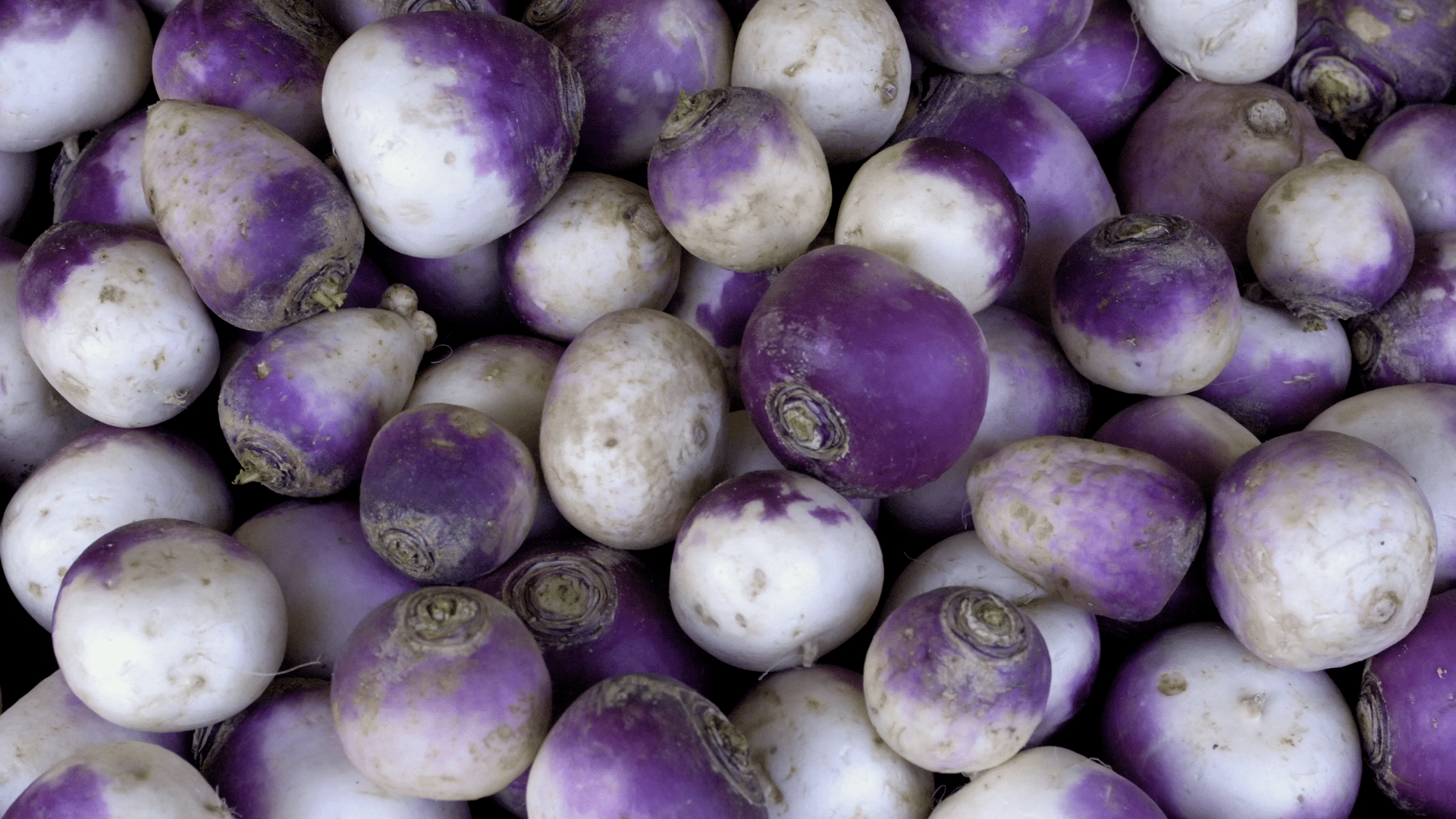
Purple rutabagas have purple skin and yellow flesh with a slightly sweet, earthy flavor. They are a hybrid of cabbage and turnip and are commonly roasted, mashed, or added to soups.
These root veggies are high in fiber, potassium, and vitamin C. Their firm texture holds up well in stews, and their subtle flavor makes them a great low-carb alternative to potatoes.
12. Purple Taro (Kalo)
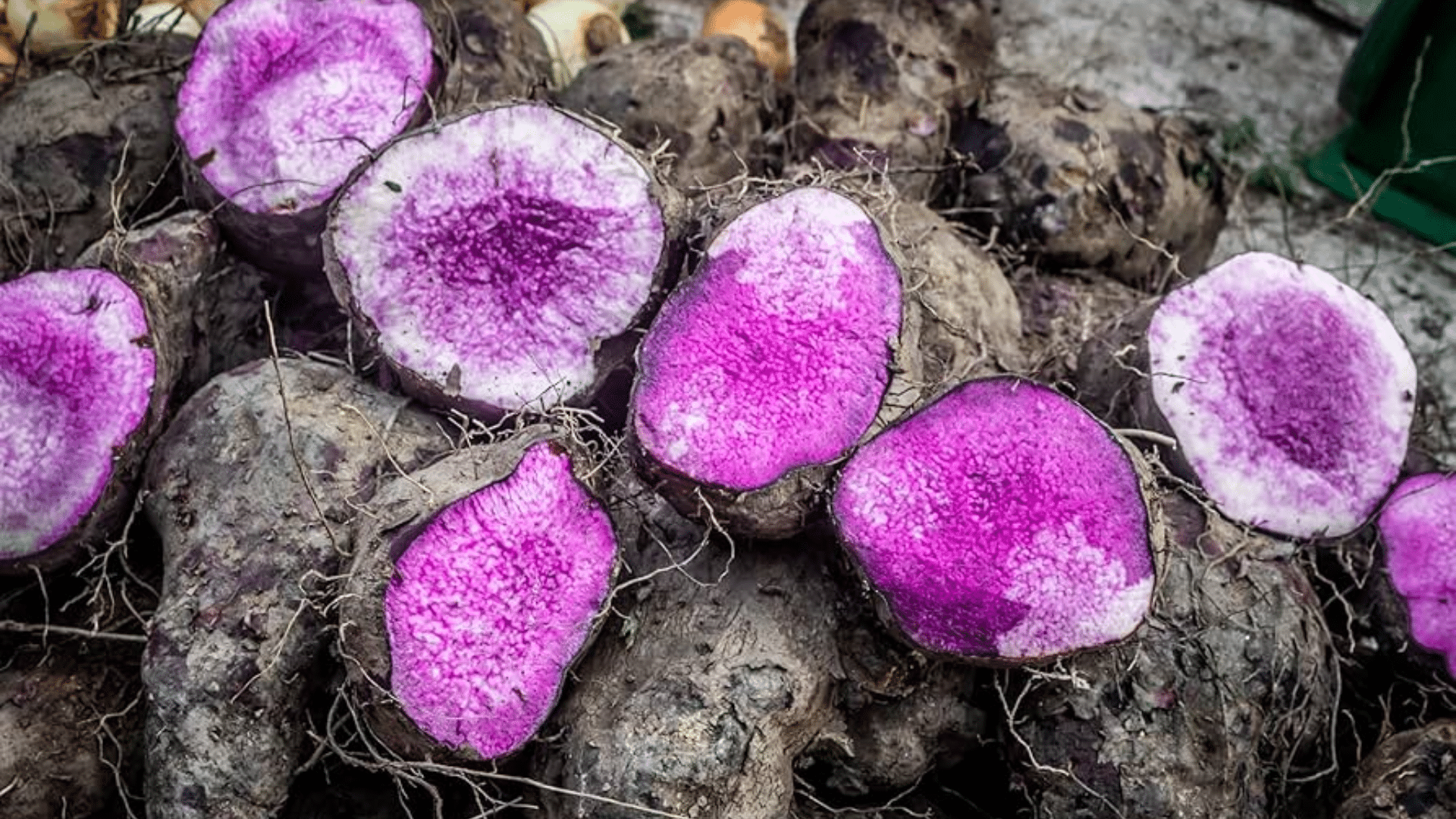
Purple taro, also called kalo in Hawaiian culture, is a starchy root with grayish-purple flesh and light brown skin. It must be cooked before eating, either boiled, mashed, or steamed.
Taro has a mild, nutty flavor and is rich in fiber and minerals like magnesium and potassium. It’s a staple in Polynesian cuisine and is often used in poi, desserts, or savory dishes.
13. Yacón (Purple Variety)
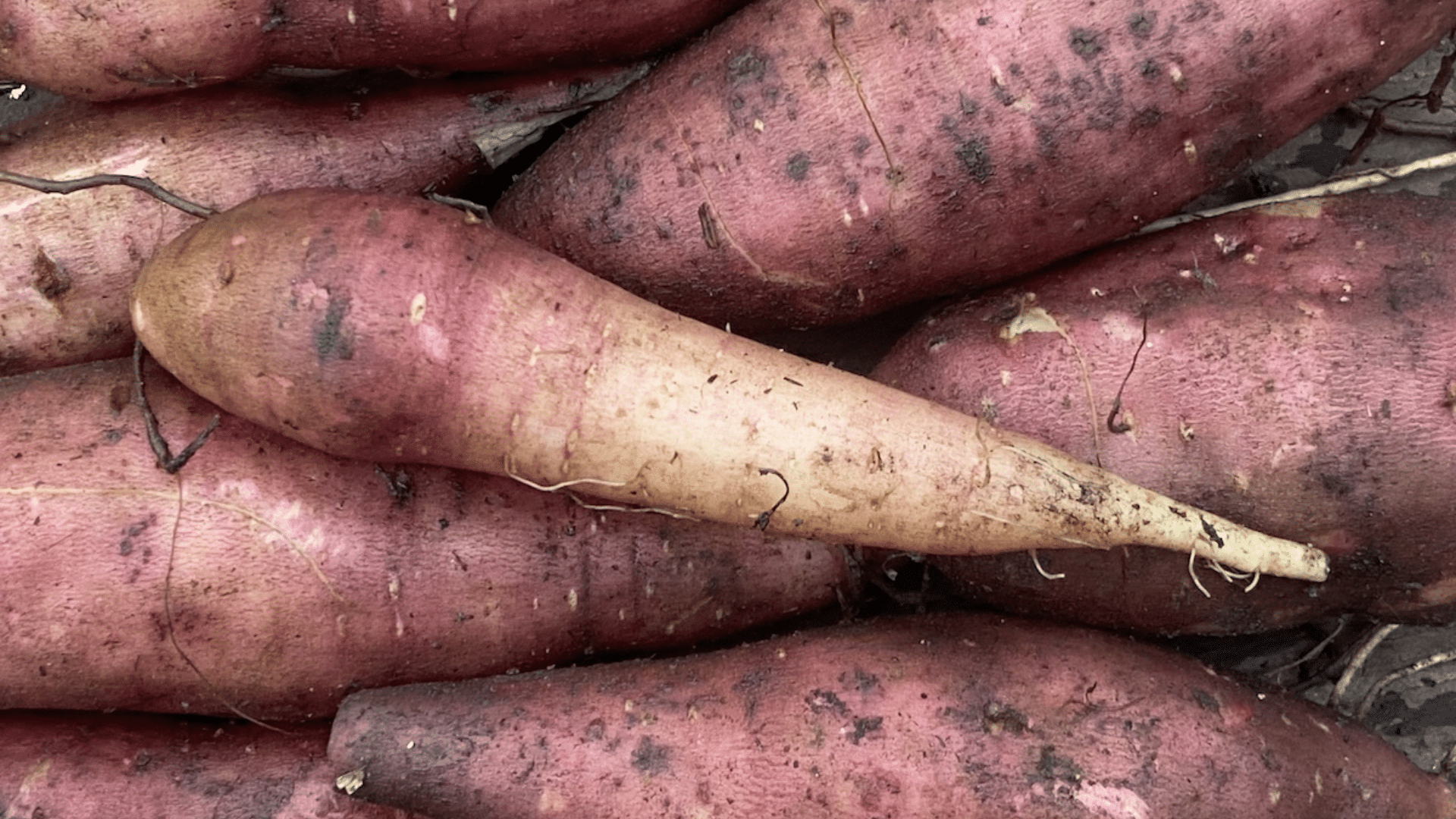
Purple yacón is a sweet, crunchy root native to the Andes, often compared to apples or jicama in texture.
While more common in golden or white varieties, purple-skinned yacón offers the same benefits, prebiotic fiber (inulin), low calories, and good hydration. It’s mostly eaten raw or lightly cooked.
The purple-skinned types are less common but are rich in antioxidants and eye-catching in salads.
14. Purple Jerusalem Artichoke (Sunchoke)

Purple Jerusalem artichokes, or sunchokes, look like small, knobby potatoes with a light purple tint. Their white flesh is nutty and sweet, often compared to water chestnuts when raw.
When roasted, they become soft and creamy. They’re rich in inulin, a prebiotic fiber that supports gut health. A great alternative to potatoes, they shine in soups, roasted mixes, or sliced into salads.
15. Olluco
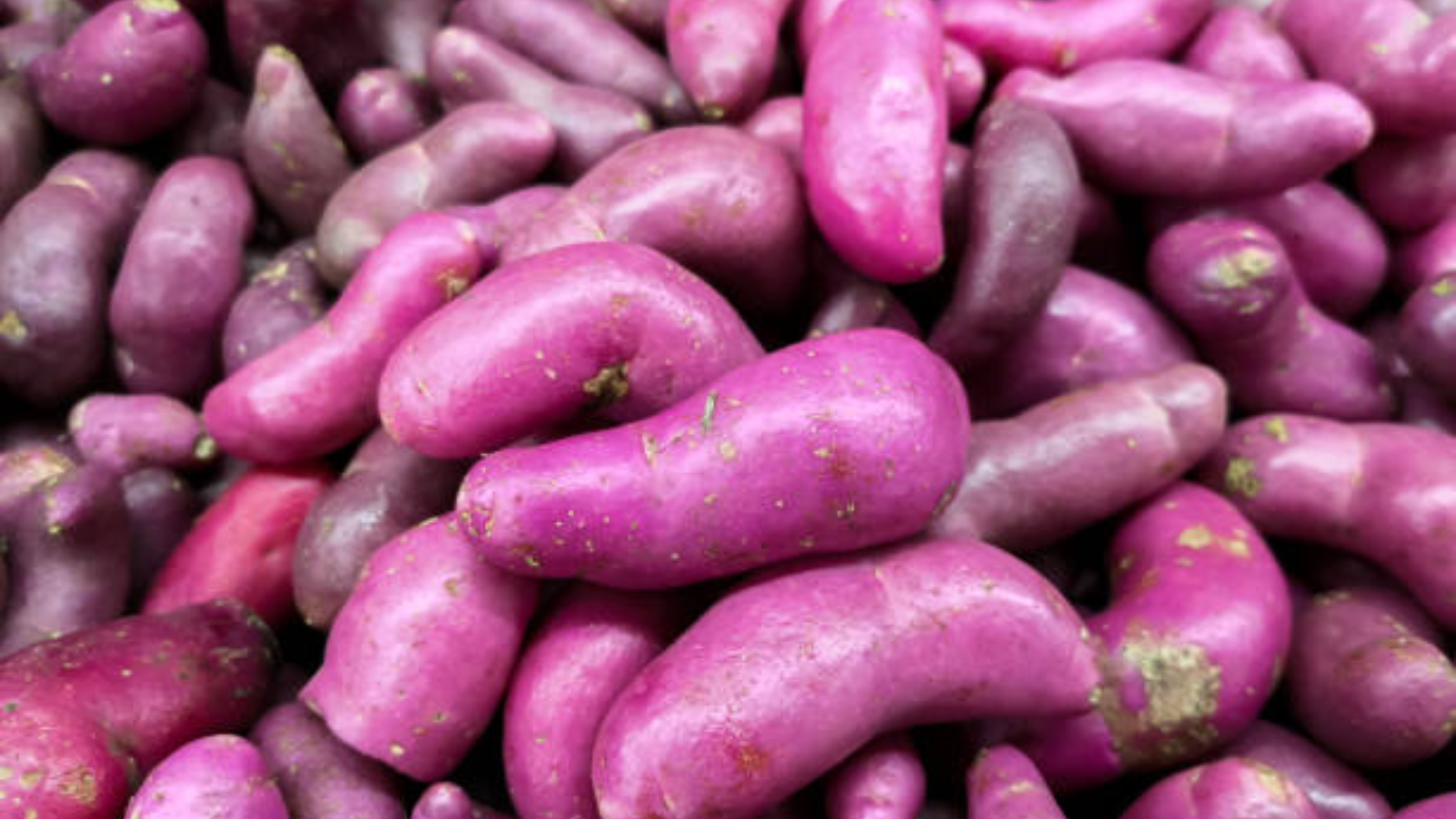
Olluco is a colorful Andean root with shiny skin that can come in purple, yellow, or pink. The purple varieties are particularly striking. It has a firm, waxy texture and a mild, slightly tangy flavor.
Rich in antioxidants and vitamin C, olluco is often boiled or sautéed and used in traditional South American dishes. Its bright appearance makes it popular in mixed root dishes.
16. Purple Parsnip
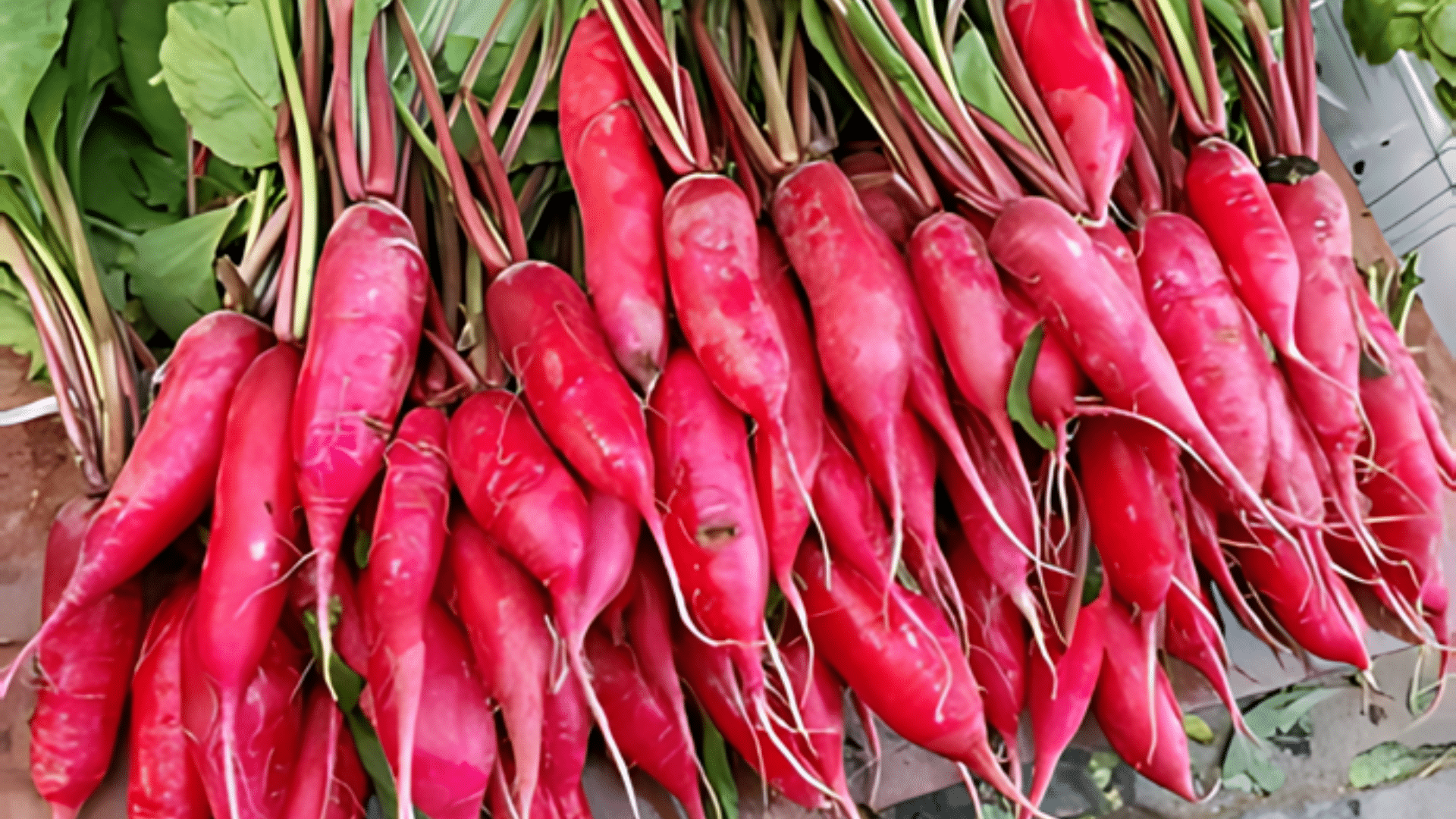
Purple parsnips are a colorful twist on the classic cream-colored root. With purple skin and creamy white flesh, they offer a sweet, nutty flavor that intensifies when roasted.
Like their traditional counterpart, they’re rich in fiber, vitamin C, and potassium. They hold up well in soups, stews, or simply roasted. The deep skin color also provides a small boost in antioxidants compared to standard parsnips.
17. Purple Cassava (Yuca)
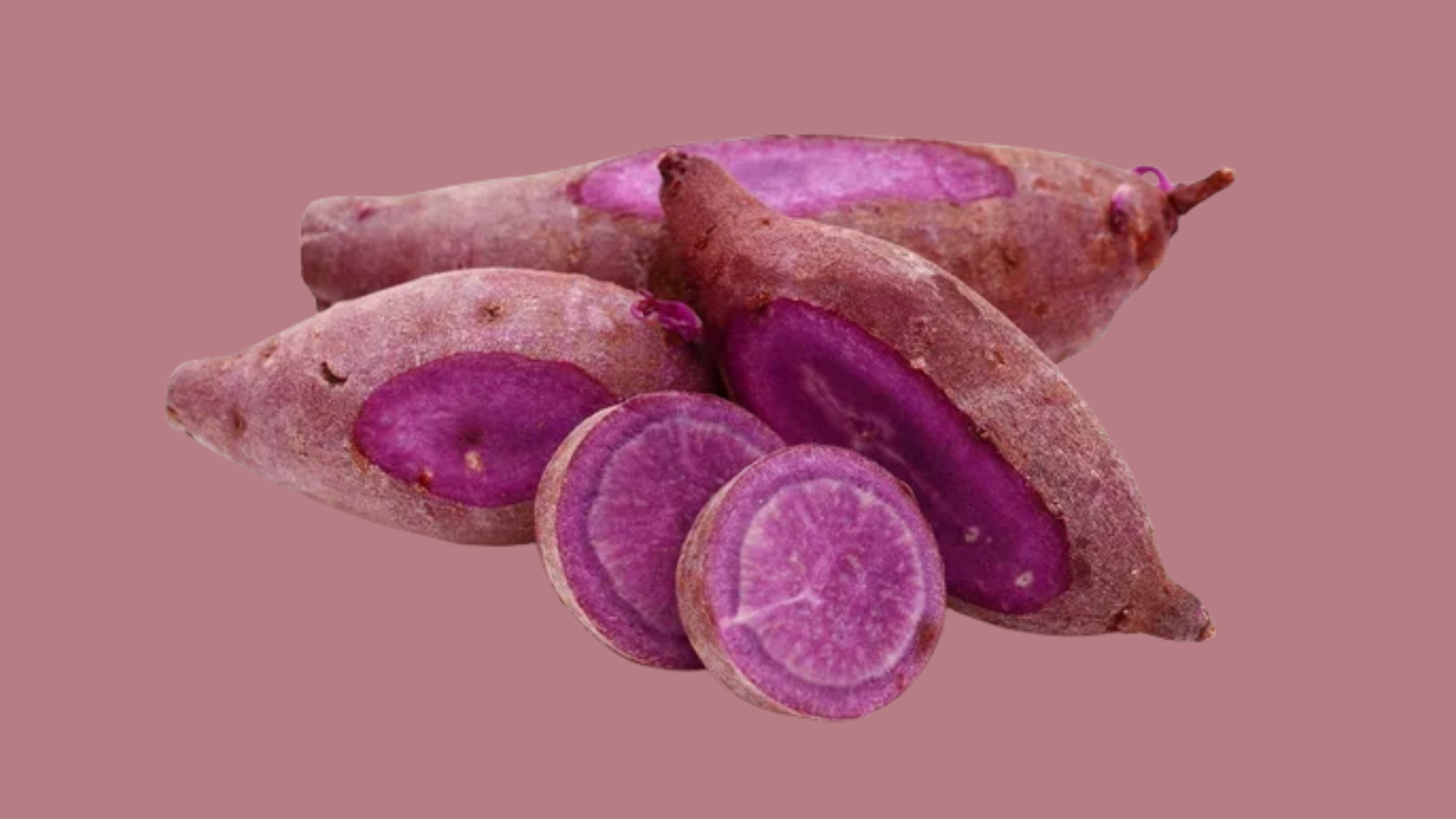
Purple cassava is a starchy root with thick, bark-like skin and a subtle purple hue in the flesh. Known for its high carbohydrate content, cassava must be cooked before eating.
It’s used in flours, boiled dishes, or fried like potatoes. While most cassava varieties are white, the purple type includes additional anthocyanins, offering more antioxidants.
It’s common in Latin American, African, and Southeast Asian cuisines.
18. Purple Sweet Cassava
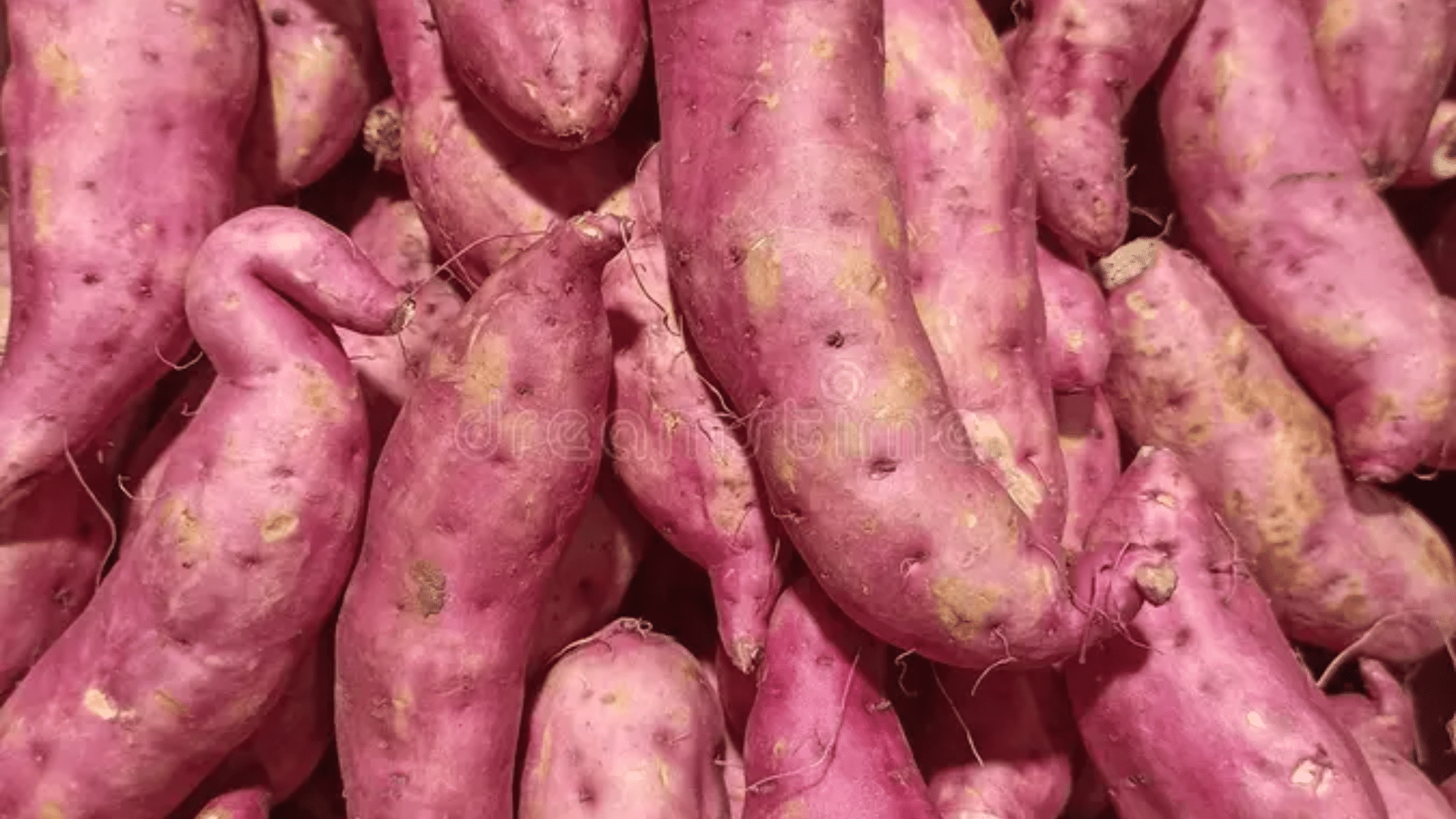
Purple sweet cassava has a similar texture to regular cassava but offers a slightly sweeter flavor and noticeable purple coloring throughout the root. It’s often steamed, mashed, or turned into cassava cake and other desserts.
Because of its mild sweetness and soft texture after cooking, it pairs well with coconut milk and vanilla. Its anthocyanin content makes it a more nutritious and colorful alternative to white varieties.
19. Purple Oca (Oxalis tuberosa)
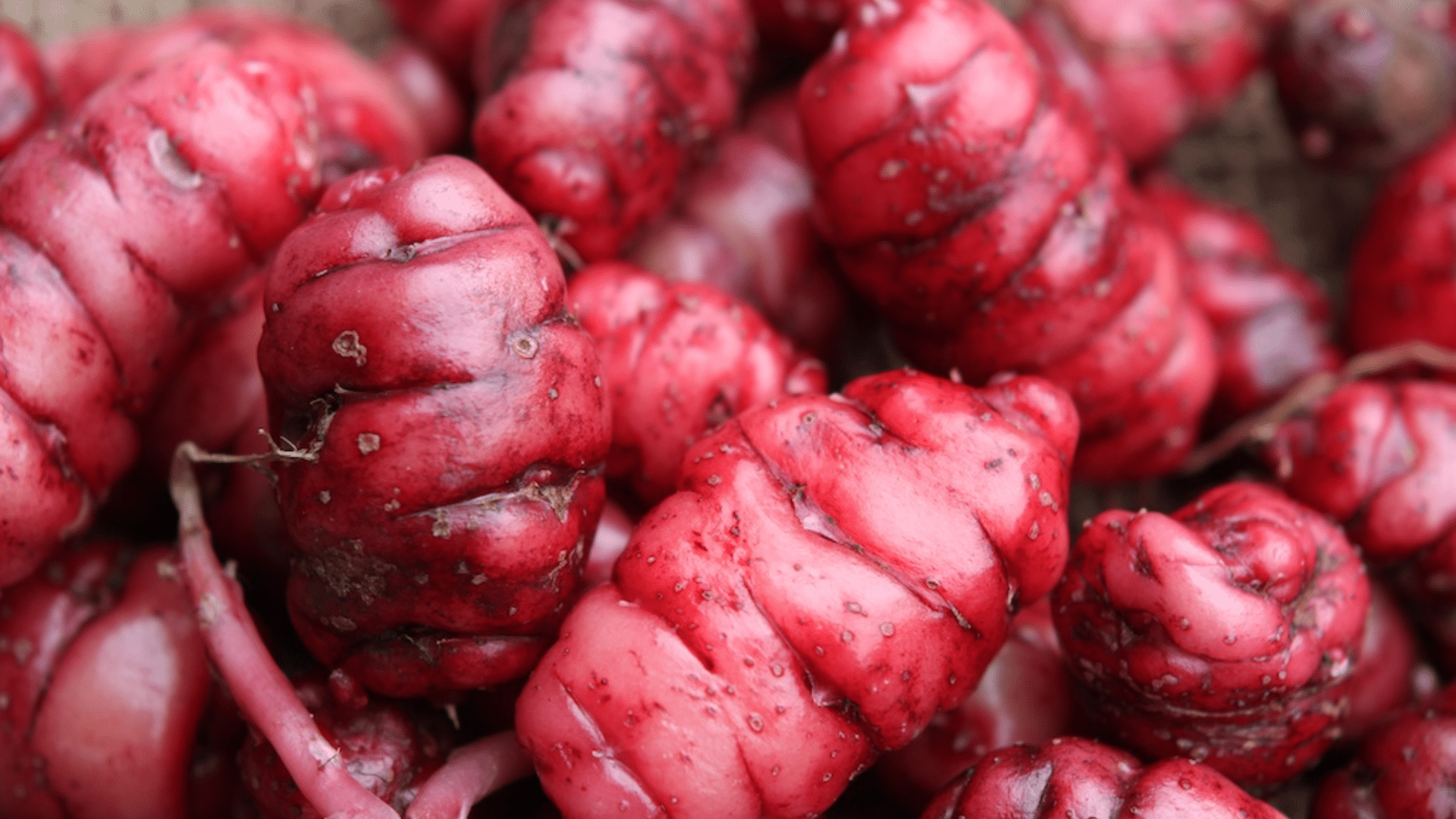
Purple oca is a small Andean tuber known for its wrinkled shape and bold color. It has a tangy flavor when raw and becomes slightly sweet and nutty when roasted.
Oca is rich in vitamin C and carbs, and it’s a great alternative to potatoes. In Peru and Bolivia, it’s a traditional staple. Roast or boil it for a colorful, flavorful addition to side dishes.
20. Purple Chinese Radish (Daikon)
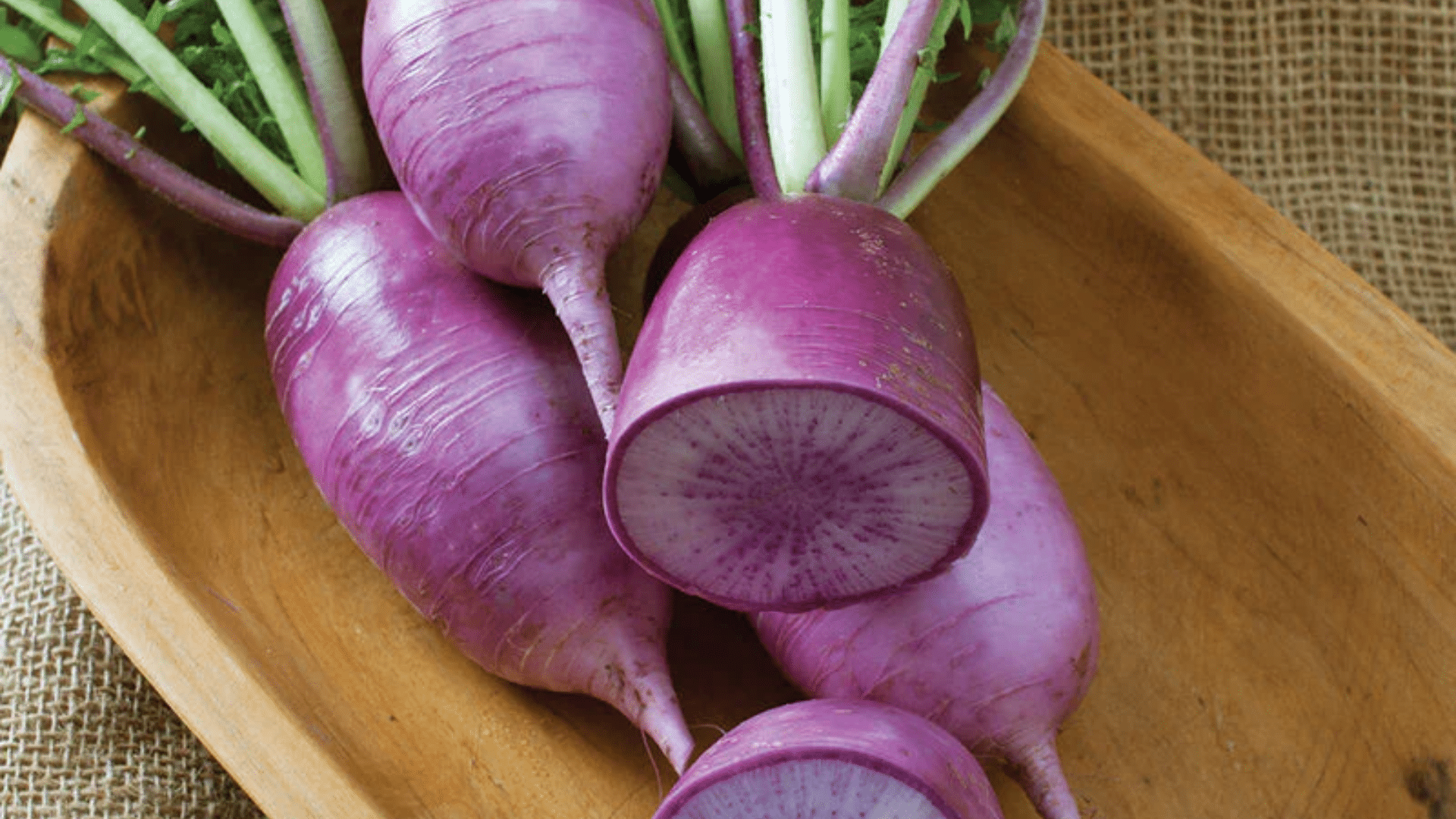
This variety of daikon radish features deep purple skin with vibrant purple or white flesh. It has a mild, slightly spicy taste that works well raw in salads, pickled, or stir-fried.
The rich purple coloring signals the presence of anthocyanins, offering additional antioxidant benefits. These radishes are crisp, refreshing, and can add color and crunch to everyday meals, slaws, and side dishes.
21. Purple Salsify (Black Salsify)
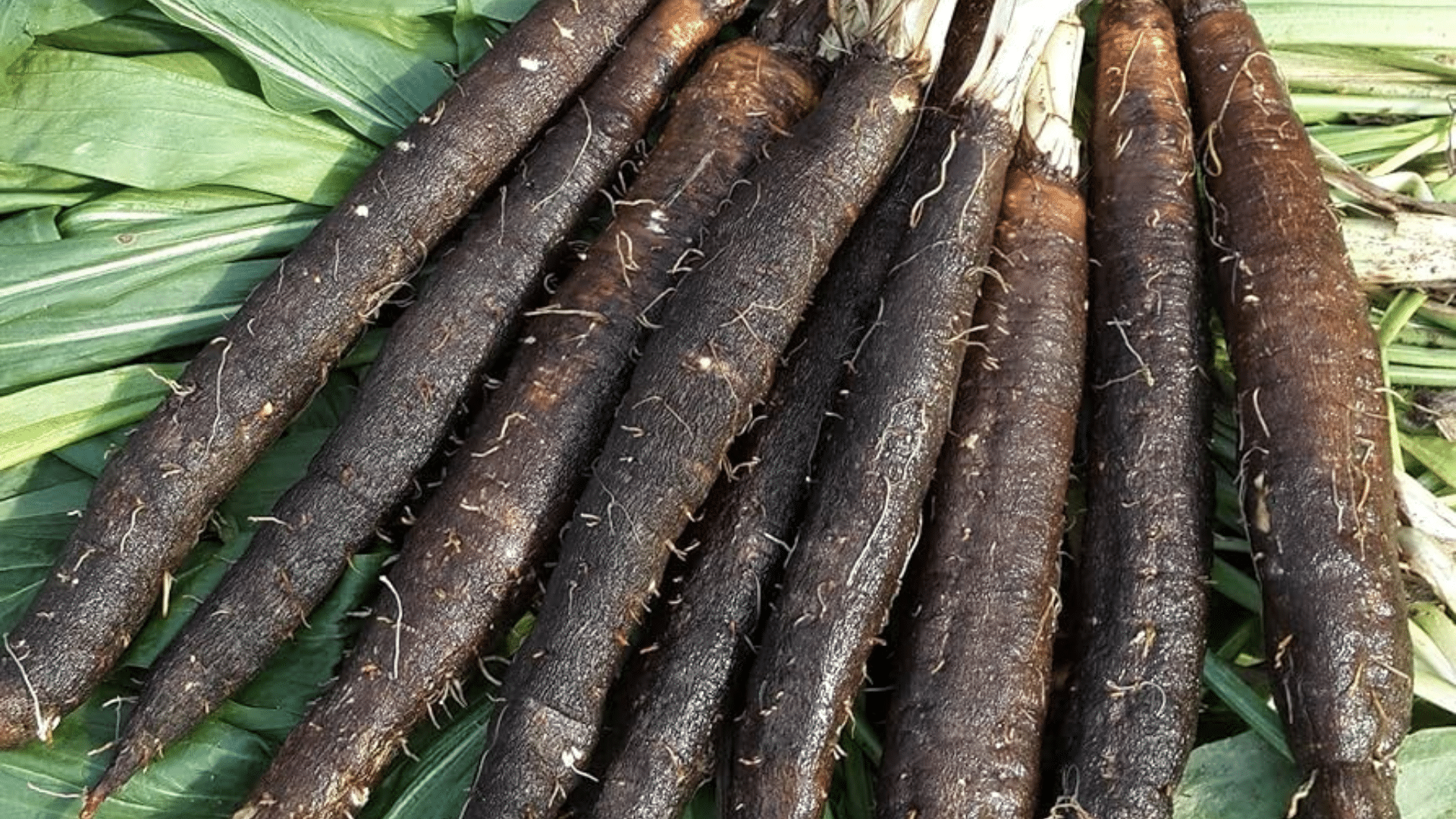
Despite being called “black,” purple or black salsify has dark skin with creamy white flesh. Known as the “oyster plant,” it has a subtle, slightly oyster-like taste.
It’s rich in fiber and minerals and becomes tender when boiled or roasted. Peel it just before cooking to avoid browning. Though uncommon, it’s loved in European kitchens for soups, purees, or as a delicate vegetable side.
22. Purple Horseradish Root
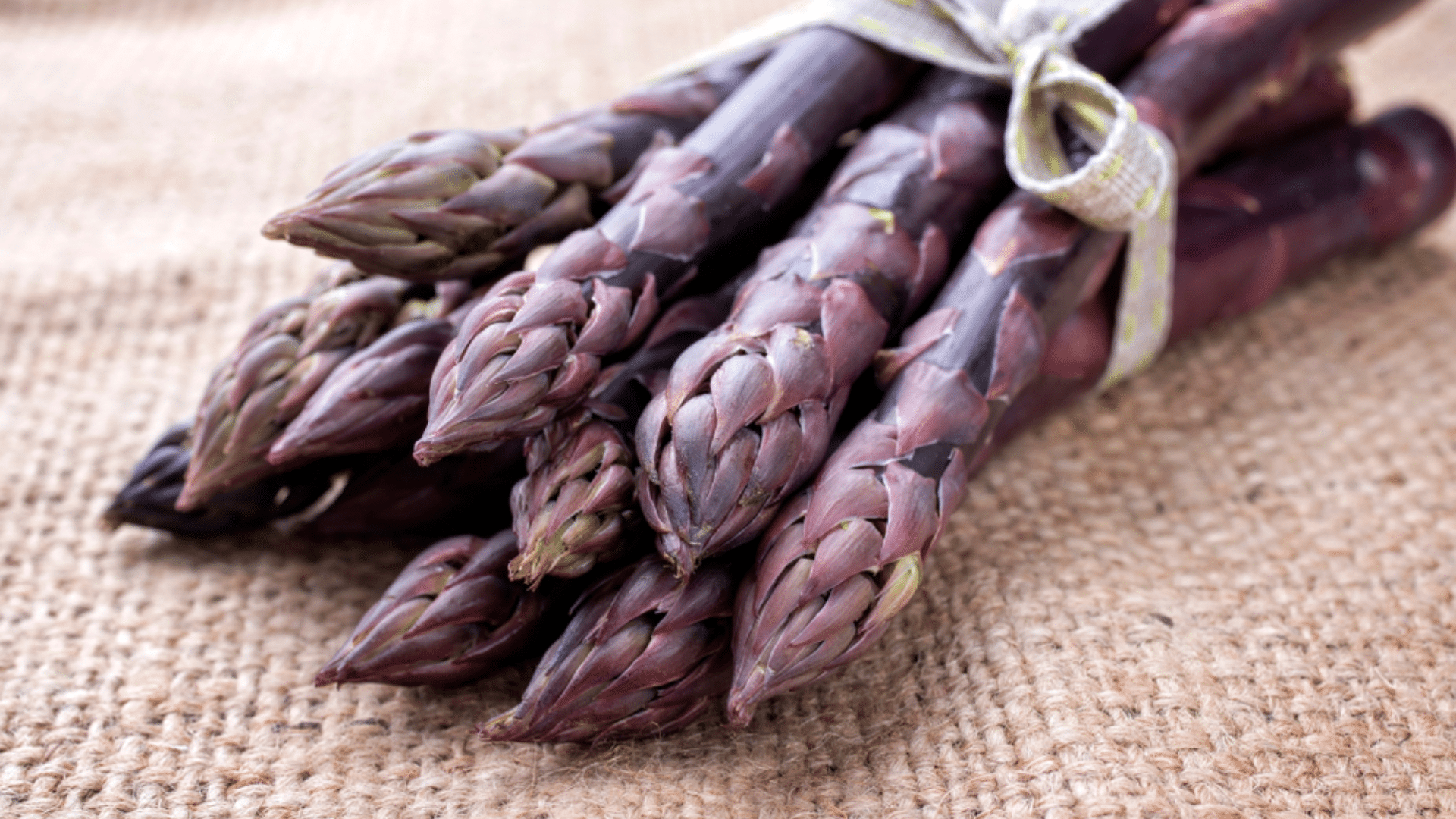
Purple horseradish root is a rare variety with a purplish hue on the outside and white flesh inside. It offers the same strong, spicy flavor as traditional horseradish, used mostly grated and mixed into sauces.
The purple tint adds visual interest, while the root still provides digestive benefits and antibacterial properties. Use it sparingly to add heat and depth to meats, dressings, or dips.
23. Purple Ginger (Turmeric Relative)
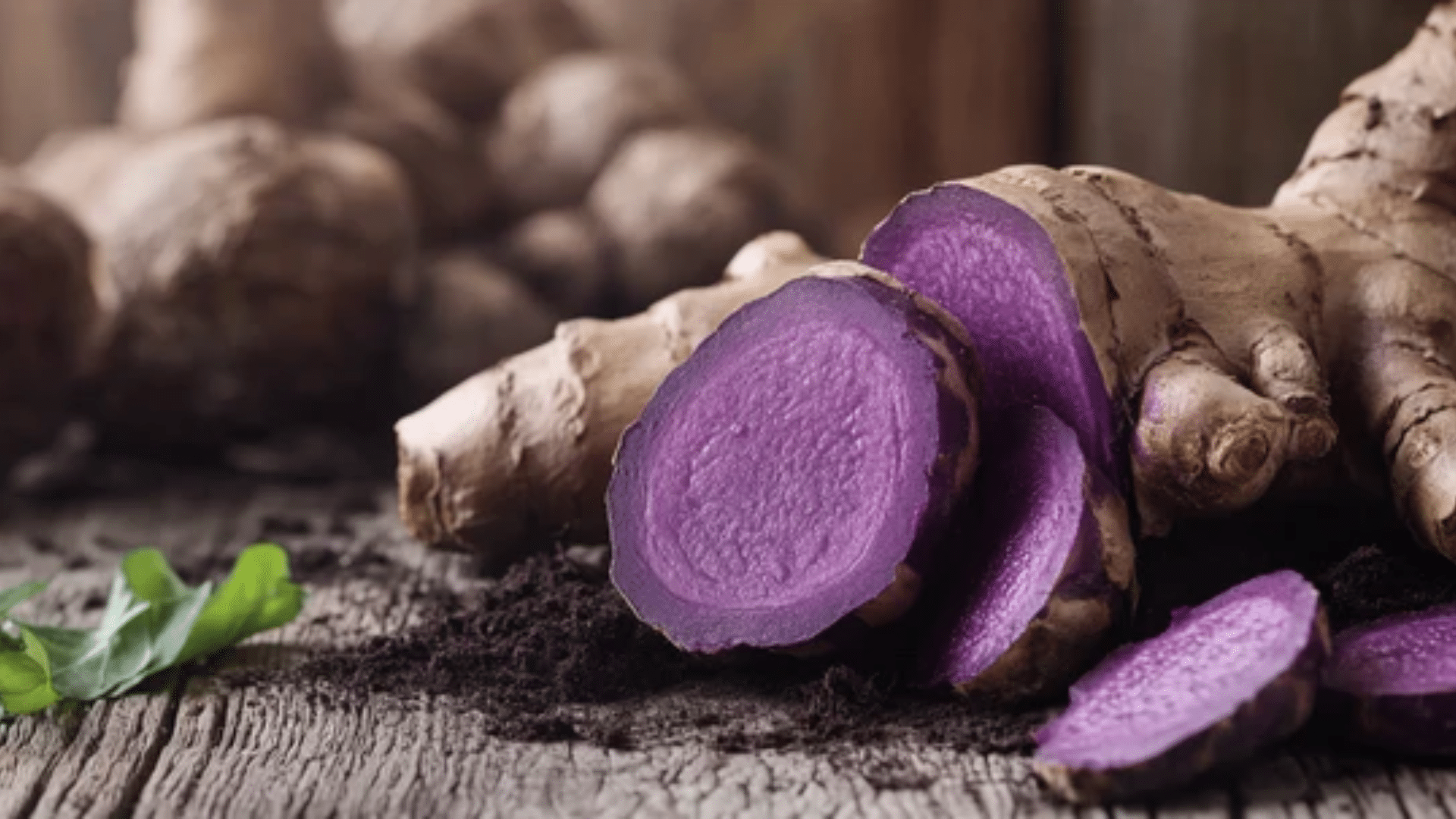
This vibrant rhizome has a bright purplish skin with creamy flesh and a floral, mildly spicy flavor. It’s related to both ginger and turmeric but is used more for its aroma and color.
Purple ginger contains anti-inflammatory compounds and antioxidants, making it both medicinal and flavorful. It’s best used in teas, soups, or ground into spice blends to give dishes a fragrant, colorful kick.
24. Purple Yacon
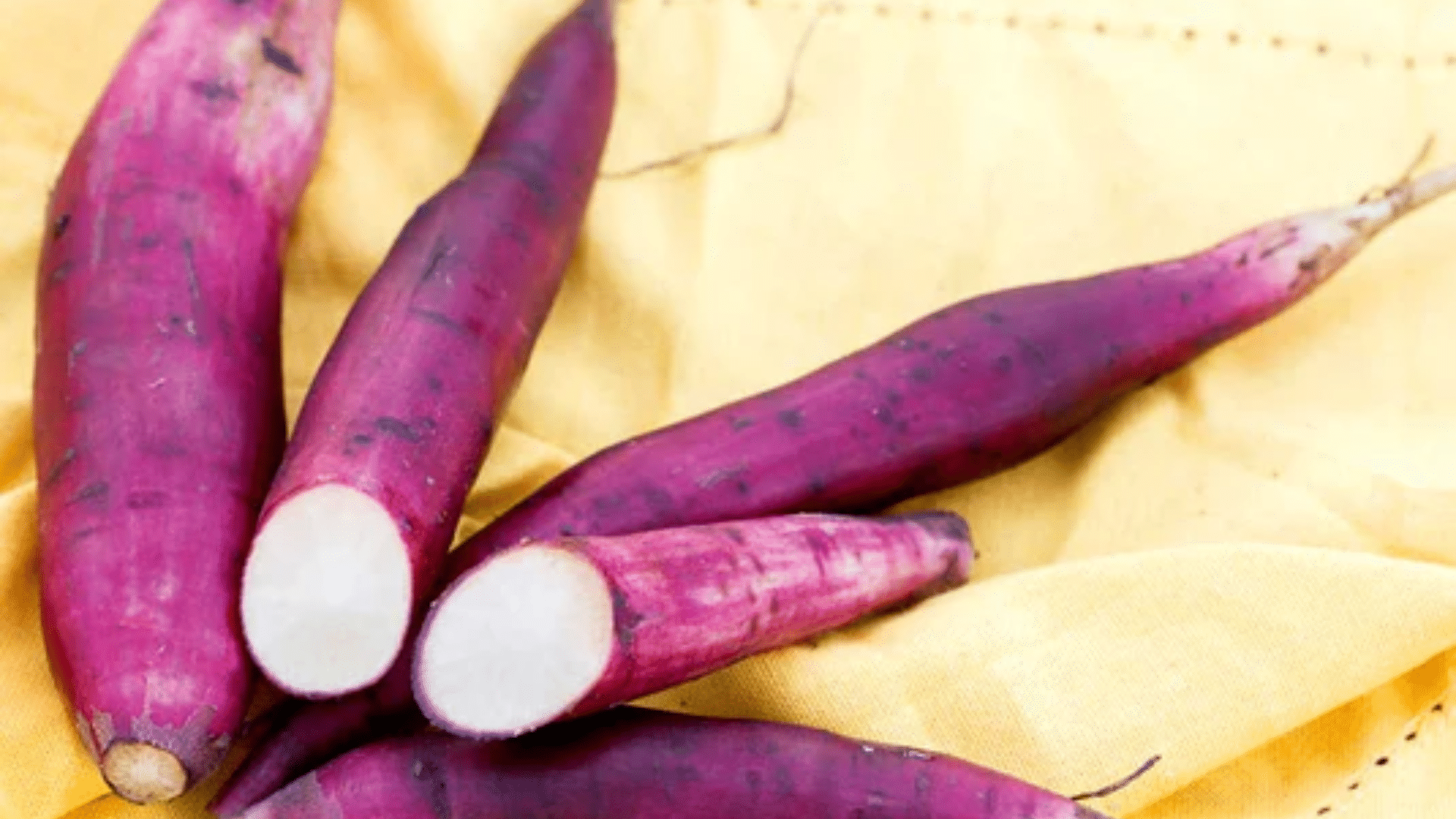
Purple yacon has juicy, crunchy flesh and mild sweetness, often compared to apples or watermelon. It’s native to South America and high in inulin, a natural prebiotic that supports gut health.
The purple skin adds extra anthocyanins, making it both tasty and nutritious. Yacon is typically eaten raw, thinly sliced in salads, or lightly sautéed. It’s refreshing and perfect for light, healthy snacks.
25. Purple Jicama
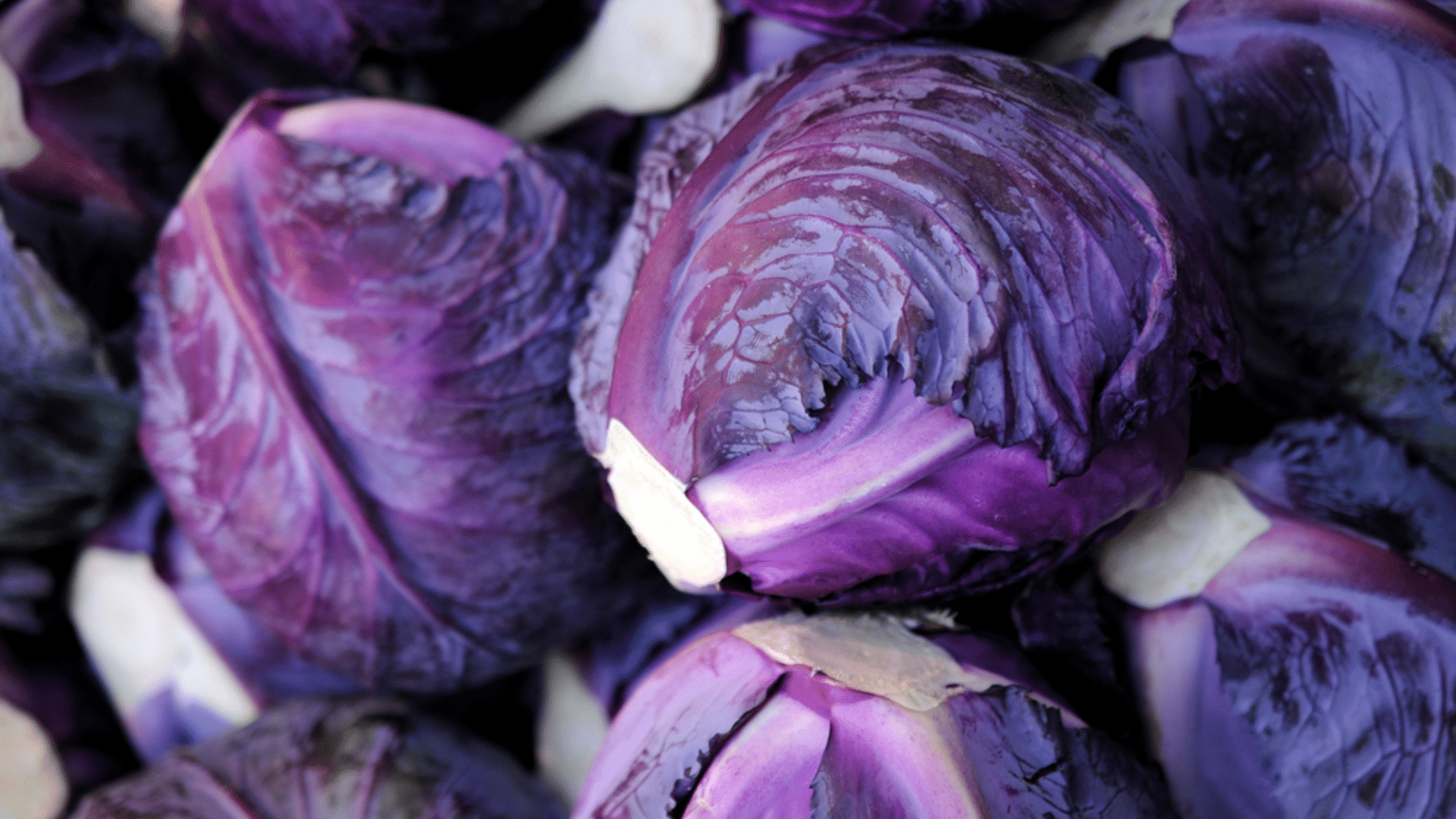
Purple jicama is a rare twist on the more common tan-skinned jicama. It has crisp, white flesh and a mildly sweet, nutty flavor. It’s low in calories and high in fiber, perfect for raw snacking or slicing into salads.
The purple variety contains more antioxidants in the skin, adding visual appeal and a small nutritional boost. Peel before eating and enjoy fresh or lightly cooked.
26. Purple Potatoes (Heirloom Varieties)
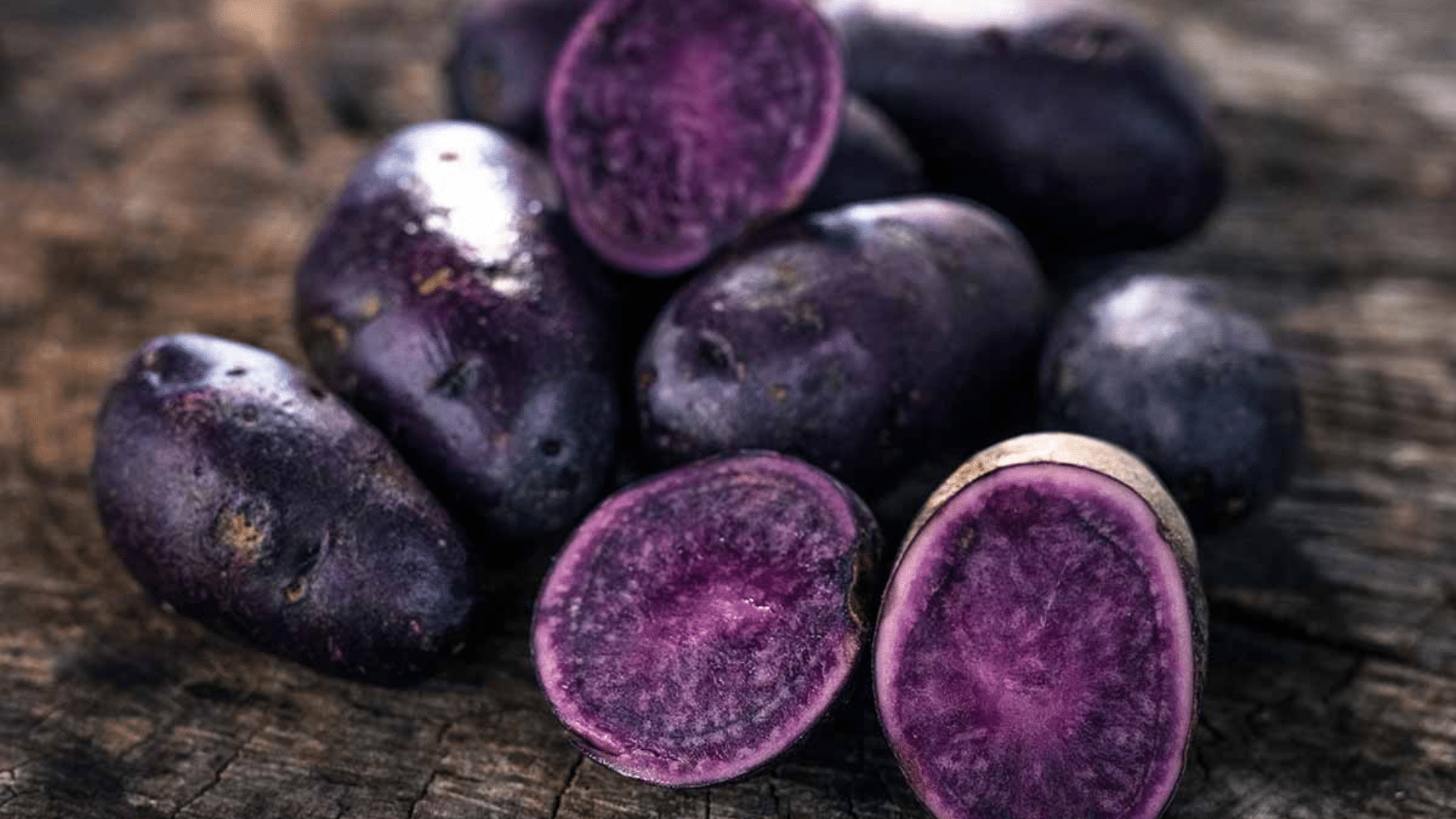
Purple potatoes come in several heirloom types like Purple Peruvian, All Blue, and Adirondack Blue. These vibrant spuds have deep purple skin and flesh, full of anthocyanins that remain even after cooking.
They have a slightly nutty flavor and work well roasted, mashed, or in potato salads. Their firm texture and eye-catching color make them a favorite for both chefs and home cooks.
27. Purple Sweet Potato (Multiple Cultivars)
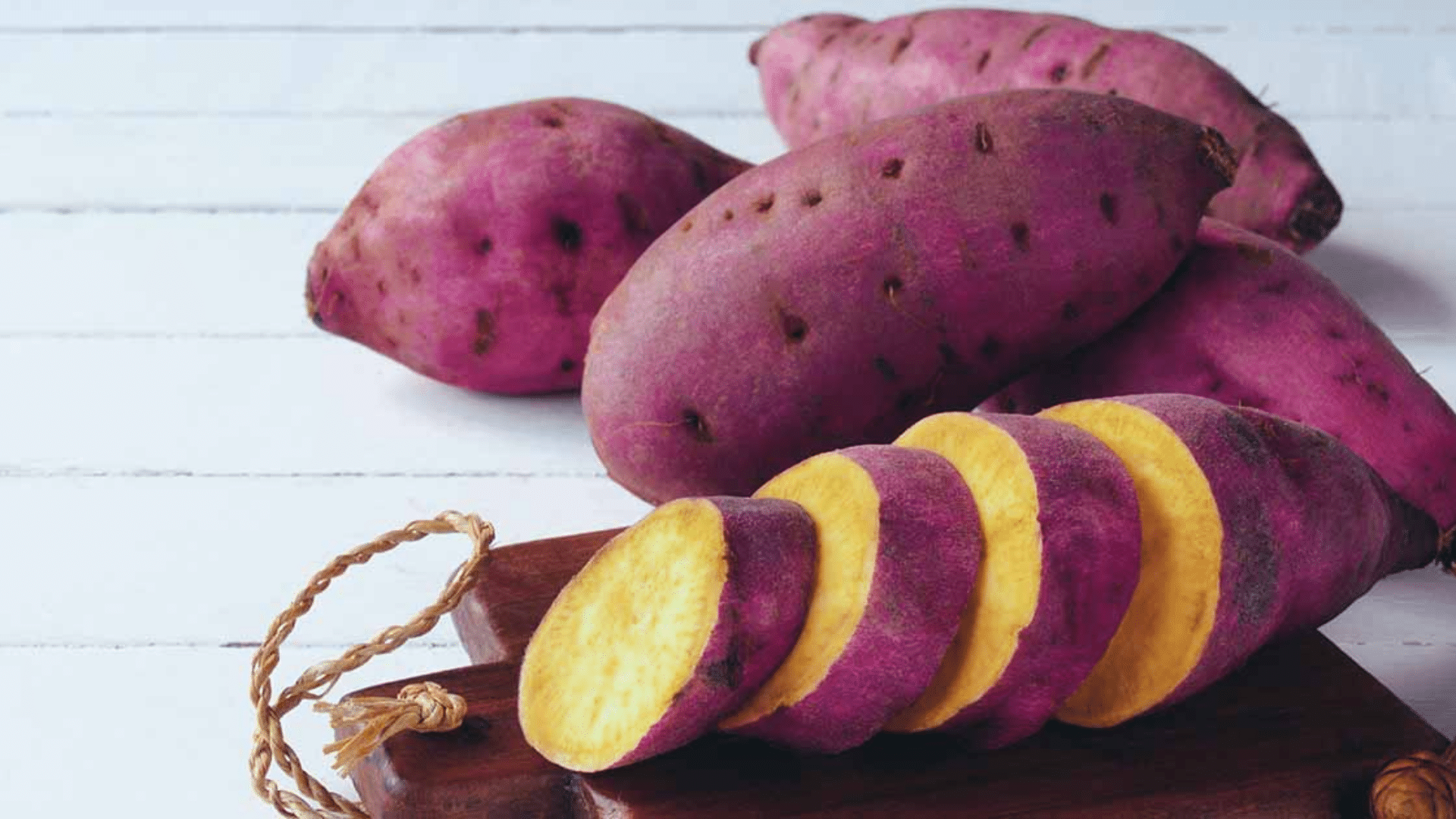
Beyond the popular Stokes variety, purple sweet potatoes come in many cultivars, each with deep violet flesh and skin. These roots are naturally sweet, dense, and high in antioxidants.
Often used in pies, soups, or roasted dishes, they bring color and nutrients to meals. They’re rich in fiber and vitamin A and stay purple even when baked or boiled, adding beauty to any dish.
28. Purple Boniato
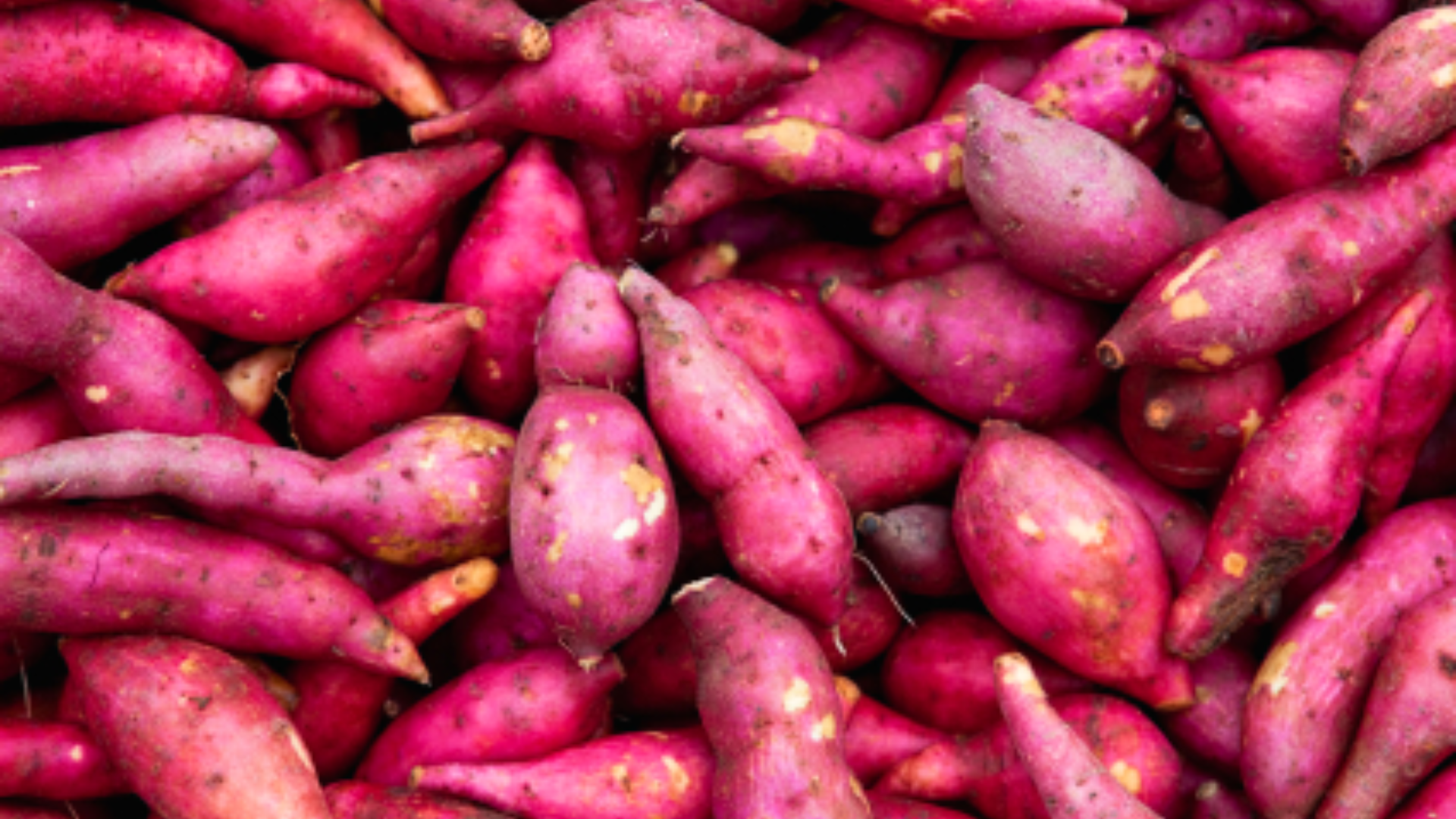
Purple boniato is a starchy root with purple-tinted skin and white to light purple flesh. Common in Caribbean and Latin cuisines, it’s drier and fluffier than a regular sweet potato.
It has a mild, nutty flavor that pairs well with savory seasonings. Purple boniato is typically boiled, fried, or roasted and offers a good dose of complex carbs, fiber, and antioxidants.
29. Purple Manioc
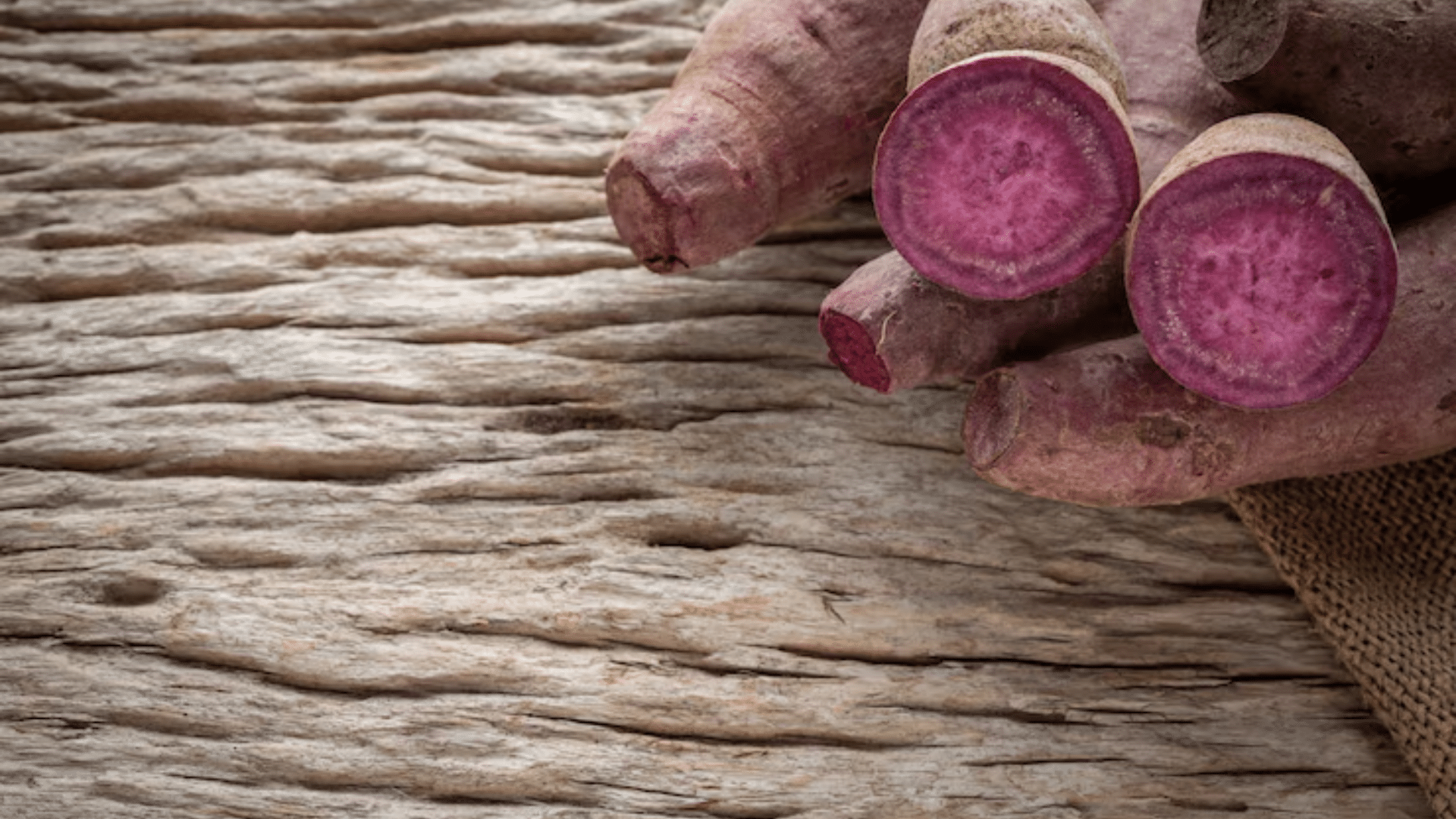
Also called cassava, purple manioc is a variety with light purple streaks in its flesh and a slightly sweet taste. Like all cassava, it must be cooked before eating to remove naturally occurring toxins.
Once boiled, fried, or turned into flour, it becomes a versatile base for breads and desserts. The purple type offers more antioxidant content than its white counterpart.
30. Purple Turmeric
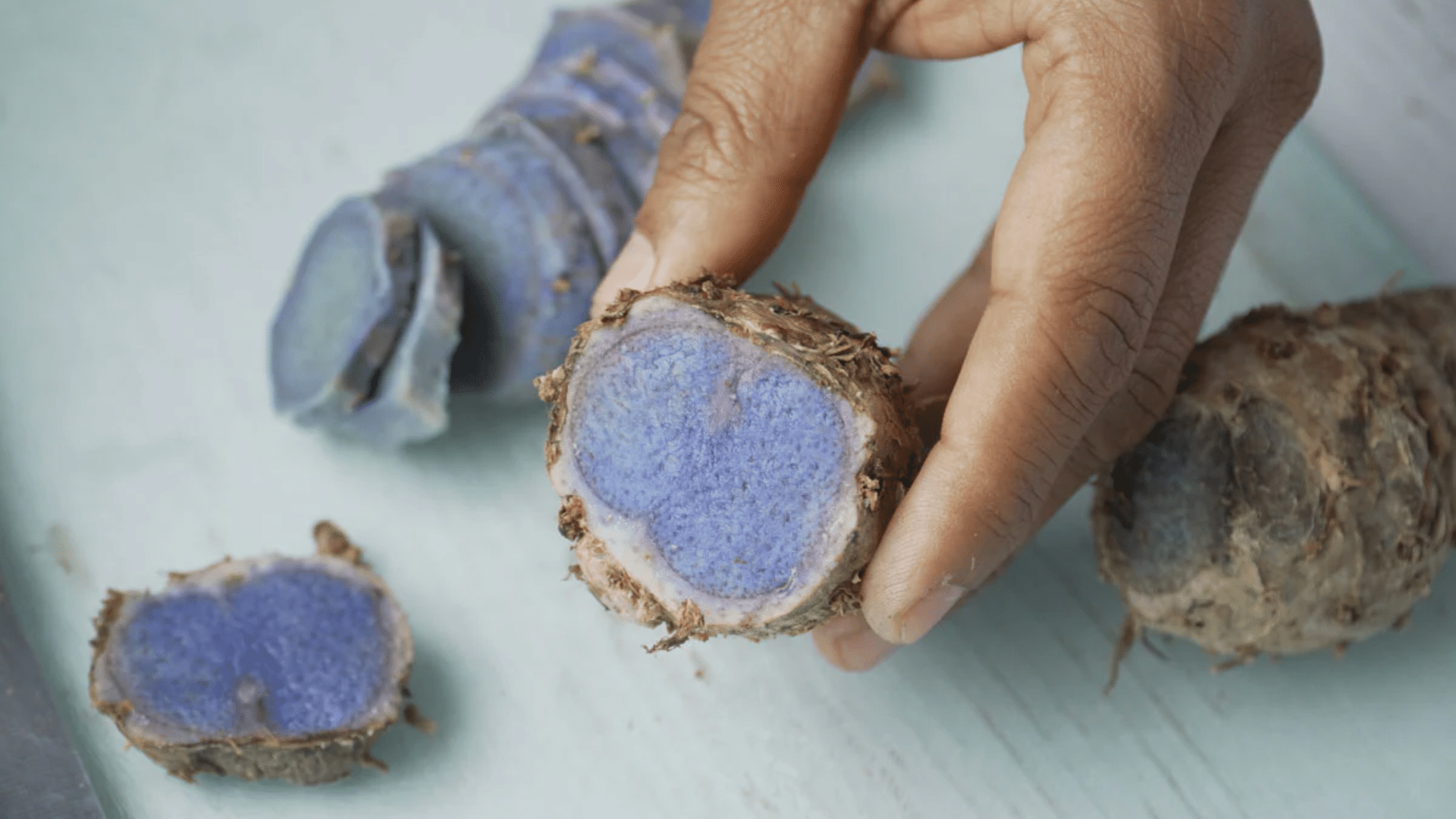
Purple turmeric is a lesser-known relative of the golden variety, with a dark purple or bluish interior and earthy, bitter flavor. It’s used in traditional medicine and cooking, offering anti-inflammatory and antioxidant benefits.
While not as common as yellow turmeric, it’s gaining interest for its striking color and health potential. Often used in powdered form, teas, or healing tonics, it has strong herbal notes.
31. Purple Yam (Different from Ube)
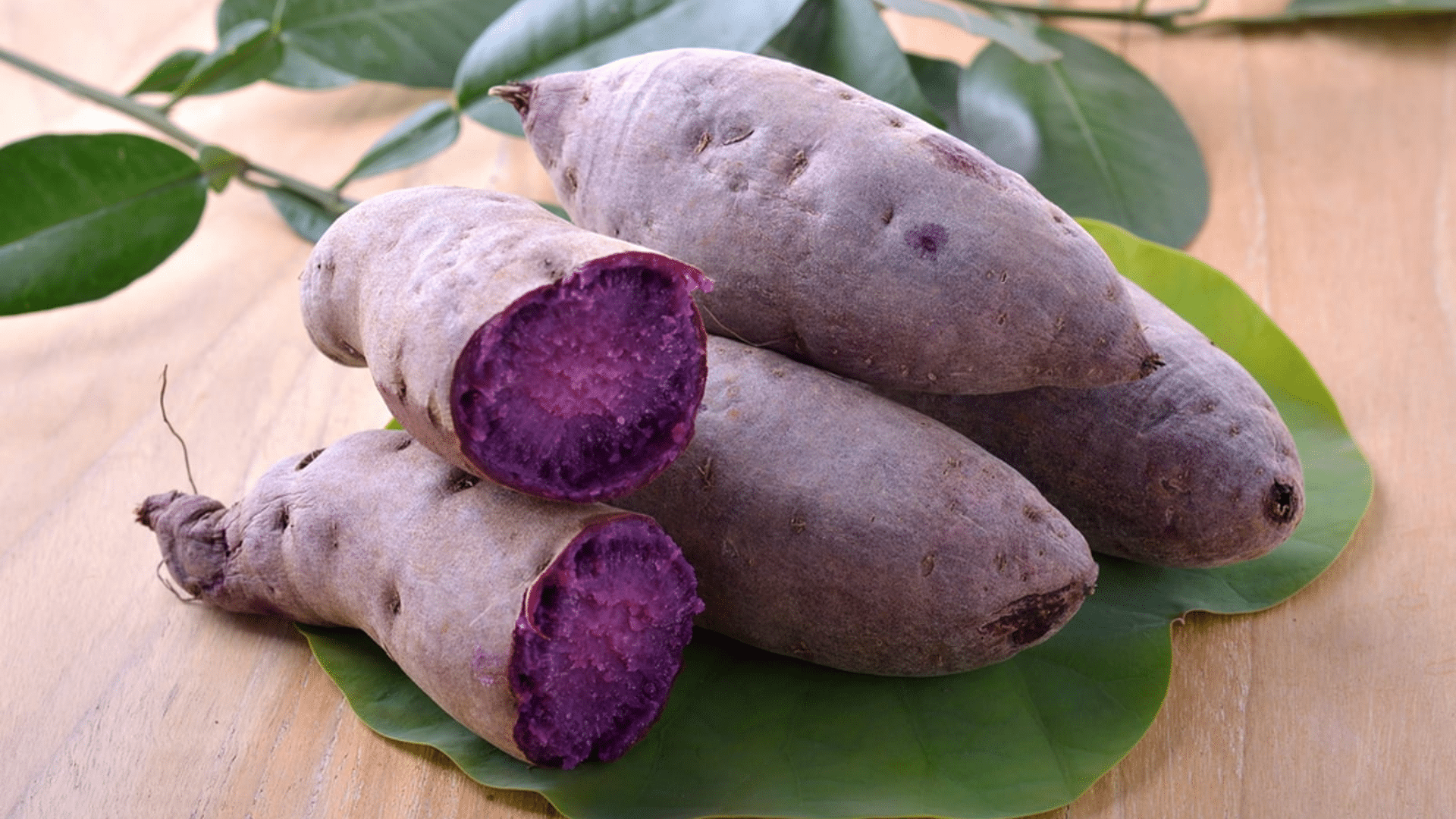
Often confused with ube, this purple yam is a distinct species with a dry, starchy texture and deep violet flesh. It’s native to Southeast Asia and used in both sweet and savory dishes.
When cooked, it becomes fluffy and mildly sweet, great for roasting or baking. It’s packed with fiber, potassium, and complex carbs, and its rich color makes it a standout ingredient.
32. Japanese Purple Potato
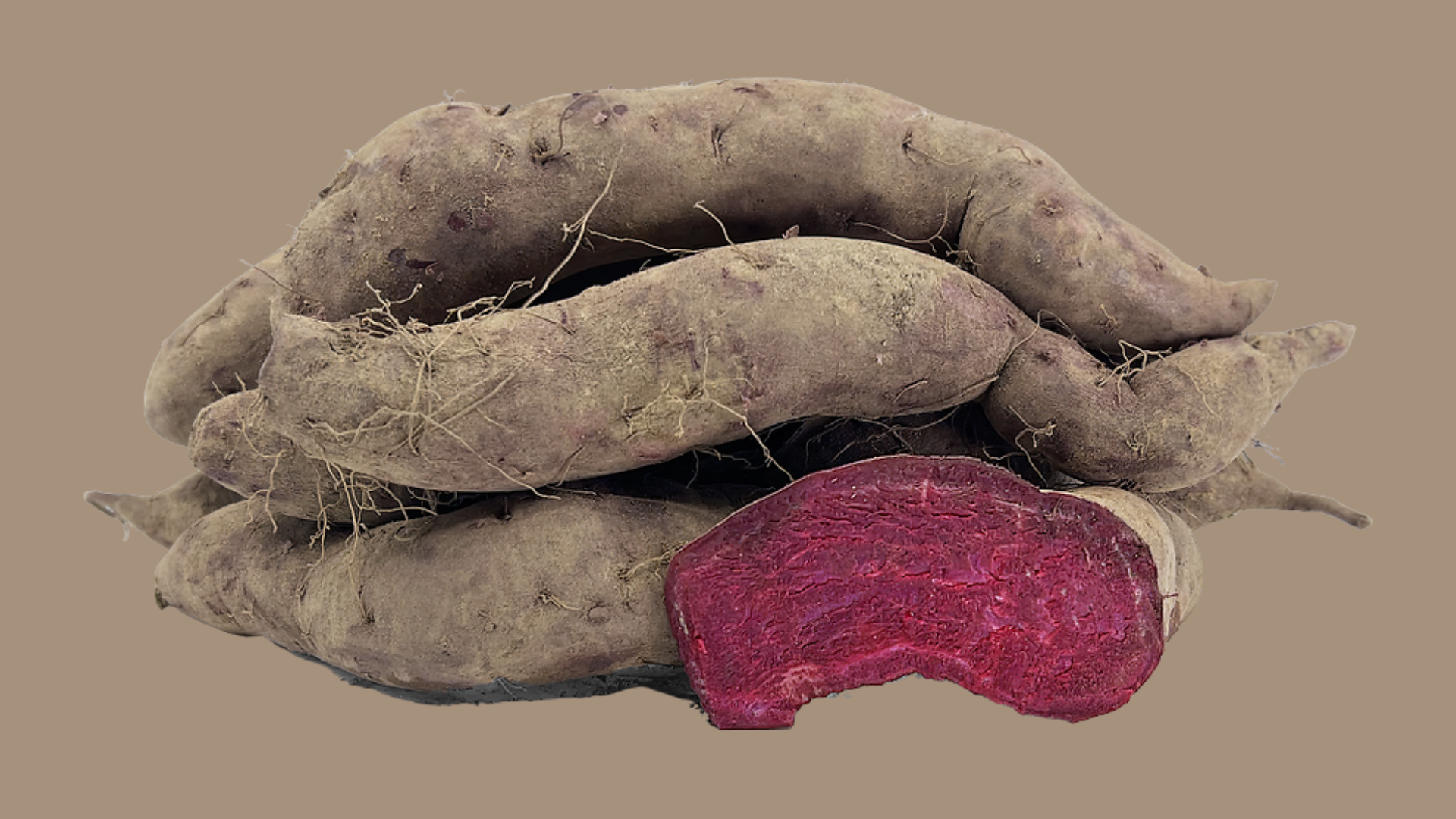
Japanese purple potatoes, often called Murasaki sweet potatoes, have a deep purple skin and pale yellow or white flesh. They are mildly sweet, dry, and starchy, ideal for baking, roasting, or mashing.
These potatoes hold their shape well and add color to any dish. Rich in fiber and antioxidants, they’re popular in Japanese and American cuisine for both savory and sweet recipes.
33. Purple Celeriac
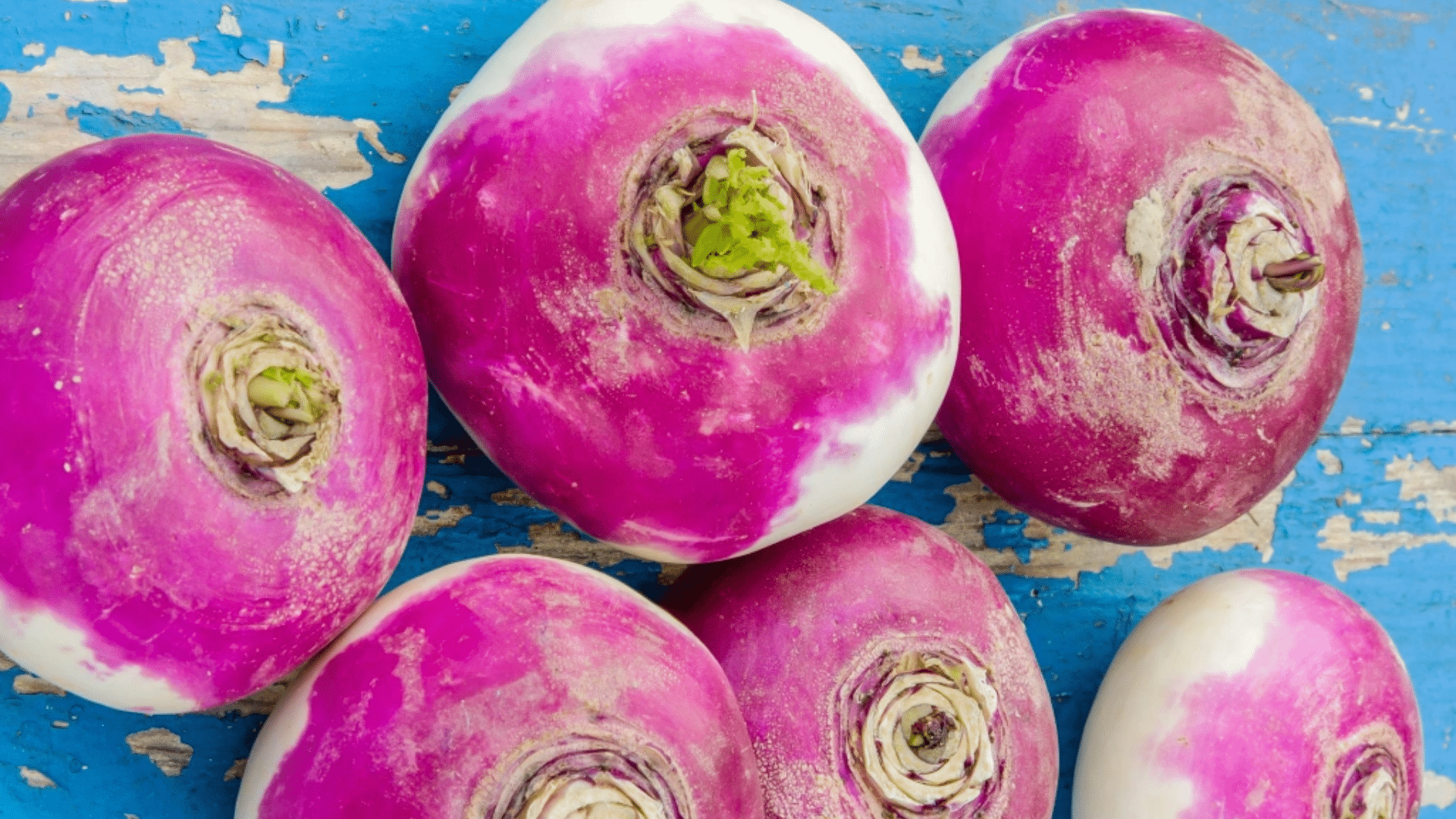
Purple celeriac is a rare variety of celery root with purplish skin and crisp white flesh inside. It has a mild celery flavor and is rich in fiber, vitamin K, and antioxidants.
Its knobby shape makes it look intimidating, but once peeled, it can be mashed, roasted, or added to soups. The purple-skinned variety adds color and slightly more phytonutrients to meals.
Conclusion
Purple root vegetables bring something special to both the kitchen and the garden. I’ve found they’re a fun way to add color, flavor, and health benefits to everyday meals.
From familiar roots like purple carrots and beets to more unique picks like oca or purple yacon, the variety keeps things interesting.
Many of them grow well in small spaces, and most are easy to cook with just a few simple steps.
I hope this list gives you ideas for trying something new. Pick one to roast, mash, or toss in a salad- or plant a few if you like to grow your own food.
These colorful roots have earned a permanent spot in my meals, and I’d love to see what you try. Tag me with your purple root recipe or garden harvest.


